Movie | Buried Treasure | Director | Actress | Actor | Supporting Actress| Supporting Actor |
Original Screenplay | Adapted Screenplay | Music in a Film | Sound Design | Editing |
Cinematography | Production Design | Ensemble Cast | Documentary
Best Movie |
|
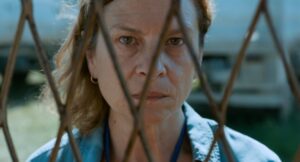  Quo Vadis, Aida? – If you’re inclined to avoid feel-bad movies (a.k.a., “Films that make you want to slit your wrists”), you may approach director Jasmila Žbanić’s dramatization of the 1995 Srebrenica massacre with trepidation. It is indeed a tough watch but fortunately also a thoroughly rewarding one in how precisely it lays out all the details leading up to the tragedy and for its commitment to depicting it with both fearless clarity and palpable compassion. By looking at the incident through the lens of one family, it drives home the human cost of war while also not obscuring its long-term detrimental effects on an entire culture. –ck Quo Vadis, Aida? – If you’re inclined to avoid feel-bad movies (a.k.a., “Films that make you want to slit your wrists”), you may approach director Jasmila Žbanić’s dramatization of the 1995 Srebrenica massacre with trepidation. It is indeed a tough watch but fortunately also a thoroughly rewarding one in how precisely it lays out all the details leading up to the tragedy and for its commitment to depicting it with both fearless clarity and palpable compassion. By looking at the incident through the lens of one family, it drives home the human cost of war while also not obscuring its long-term detrimental effects on an entire culture. –ck |
|
The Ca rd Counter – Film critic turned screenwriter turned director Paul Schrader has long been busy at the task of plumbing the tumult of men at war with themselves and the rest of the world. Take Travis Bickle in Taxi Driver (Schrader penned the 1976 Martin Scorsese classic), let alone Schrader’s last critically hailed directorial effort, First Reformed (2018), in which Ethan Hawke plays a priest struggling with his faith, sobriety and place in the world. The Card Counter is more of the same, and probably most akin to the filmmaker’s unheralded 1992 effort, Light Sleeper. The big ante here is the casting of Oscar Isaac (Ex Machina, Inside Llewyn Davis) as a troubled gambler who goes by the curious pseudonym of William Tell, and Tiffany Haddish as La Linda, something of a muse of the championship poker circuit who matches players with silent backers interested in a cut of the action. Like the aforementioned Schrader masterworks, The Card Counter ultimately becomes about redemption, atonement and a sense of justice that’s not congruent with what laws and courts would impose – something Schrader made so indelible with Taxi Driver. –tm rd Counter – Film critic turned screenwriter turned director Paul Schrader has long been busy at the task of plumbing the tumult of men at war with themselves and the rest of the world. Take Travis Bickle in Taxi Driver (Schrader penned the 1976 Martin Scorsese classic), let alone Schrader’s last critically hailed directorial effort, First Reformed (2018), in which Ethan Hawke plays a priest struggling with his faith, sobriety and place in the world. The Card Counter is more of the same, and probably most akin to the filmmaker’s unheralded 1992 effort, Light Sleeper. The big ante here is the casting of Oscar Isaac (Ex Machina, Inside Llewyn Davis) as a troubled gambler who goes by the curious pseudonym of William Tell, and Tiffany Haddish as La Linda, something of a muse of the championship poker circuit who matches players with silent backers interested in a cut of the action. Like the aforementioned Schrader masterworks, The Card Counter ultimately becomes about redemption, atonement and a sense of justice that’s not congruent with what laws and courts would impose – something Schrader made so indelible with Taxi Driver. –tm |
|
 The Killing of Two Lovers– A tale of an ordinary life beset by rage reaches “Best Movie” level with its intense screenplay, masterful sound design, and superb cast. David, a father of four in rural Utah, is agonized by a trial separation especially when he realizes his wife is seeing someone new. Pay attention to the choices of—and changes in!—aspect ratio and static shots. Raw, surprising, and mesmerizing. –djy The Killing of Two Lovers– A tale of an ordinary life beset by rage reaches “Best Movie” level with its intense screenplay, masterful sound design, and superb cast. David, a father of four in rural Utah, is agonized by a trial separation especially when he realizes his wife is seeing someone new. Pay attention to the choices of—and changes in!—aspect ratio and static shots. Raw, surprising, and mesmerizing. –djy |
|
 Red Post on Escher Street – Sion Sono, director of viscerally over-the-top horror films, turns his demented energy on a madcap two and a half hour film honoring the film extra. When a renowned, critically-acclaimed, festival-director signs on to do a big budget studio film, then decides to cast non-professional actors, everyone from the producer and studio heads, to the ghost of his dead girlfriend have an idea on how it should go. The final twenty minutes of this film alone are worth an award, as the screen nearly bulges with uncontrollable chaos, yet Sono masterfully delivers a powerful, wacky, and moving film that vibrates with energy. –mrc Red Post on Escher Street – Sion Sono, director of viscerally over-the-top horror films, turns his demented energy on a madcap two and a half hour film honoring the film extra. When a renowned, critically-acclaimed, festival-director signs on to do a big budget studio film, then decides to cast non-professional actors, everyone from the producer and studio heads, to the ghost of his dead girlfriend have an idea on how it should go. The final twenty minutes of this film alone are worth an award, as the screen nearly bulges with uncontrollable chaos, yet Sono masterfully delivers a powerful, wacky, and moving film that vibrates with energy. –mrc |
|
 Titane – By definition, titanium is characterized as being light, yet full of strength with a high resistance to corrosion and wear. Likewise, the film TITANE reflects its central character Alexia’s exploration into the durability of the human condition, as seen from an early age when she has a titanium plate implanted in her head. From there, the metal and mettle of Alexia are both tested, much like the will of the audience who find themselves subject to director Julia Ducournau’s trials of fragility and resilience alongside Alexia. –br Titane – By definition, titanium is characterized as being light, yet full of strength with a high resistance to corrosion and wear. Likewise, the film TITANE reflects its central character Alexia’s exploration into the durability of the human condition, as seen from an early age when she has a titanium plate implanted in her head. From there, the metal and mettle of Alexia are both tested, much like the will of the audience who find themselves subject to director Julia Ducournau’s trials of fragility and resilience alongside Alexia. –br |
|
Buried Treasure |
|
  This Is Not a Burial, It’s a Resurrection – Regarding this Lesotho, Africa drama about an elderly woman (the exquisite, expressive Mary Twala in one of her final roles) in a remote village preparing for death, I don’t think I’ve seen anything shot quite like it before: bold colors against darkness, faces and bodies illuminated by a single gas lamp, rough-hewn interiors giving way to bursts of painterly landscapes. Narratively, it also goes on a considerable journey. While physically confined to a small radius, it nonetheless speaks volumes about what transpires within it, going deep into themes of ritual, renewal, industrialism and mortality. Even if not always entirely knowable, it nonetheless invites one to sense and appreciate its voluminous mysteries. –ck This Is Not a Burial, It’s a Resurrection – Regarding this Lesotho, Africa drama about an elderly woman (the exquisite, expressive Mary Twala in one of her final roles) in a remote village preparing for death, I don’t think I’ve seen anything shot quite like it before: bold colors against darkness, faces and bodies illuminated by a single gas lamp, rough-hewn interiors giving way to bursts of painterly landscapes. Narratively, it also goes on a considerable journey. While physically confined to a small radius, it nonetheless speaks volumes about what transpires within it, going deep into themes of ritual, renewal, industrialism and mortality. Even if not always entirely knowable, it nonetheless invites one to sense and appreciate its voluminous mysteries. –ck |
|
 Dimland – is an atmospheric swell from debut feature filmmaker Peter Collins Campbell that centers on introspections that can occur at crossroads in our adult lives. Faced with mundane urban toils, a young woman named Brynn retreats with her boyfriend to a rural cottage from her childhood days that is not quite how she remembers experiencing it in her earlier youth. The disillusionment of leaving behind phases of life that are so real and so full of possibility at the time we experience them becomes evident as a mysterious, eerie remnant of childhood manifests in this fantastical countryside hideaway. Loss of innocence and the reality of maturity and the cycle of life collide during this existential reflection through a series of woodland encounters in a world ominously titled Dimland. –br Dimland – is an atmospheric swell from debut feature filmmaker Peter Collins Campbell that centers on introspections that can occur at crossroads in our adult lives. Faced with mundane urban toils, a young woman named Brynn retreats with her boyfriend to a rural cottage from her childhood days that is not quite how she remembers experiencing it in her earlier youth. The disillusionment of leaving behind phases of life that are so real and so full of possibility at the time we experience them becomes evident as a mysterious, eerie remnant of childhood manifests in this fantastical countryside hideaway. Loss of innocence and the reality of maturity and the cycle of life collide during this existential reflection through a series of woodland encounters in a world ominously titled Dimland. –br |
|
 The Fever – Brazilian eco-doc helmer Da-Rin’s debut feature is a feverish dream to sink into. An indigenous man moves to a port city for a “better life” but faces loss of family, prejudice, and homesickness. Dozing off at his job as a security guard, he is threatened with losing his job. Are his nighttime encounters in the nearby rainforest real or imagined? Is his mysterious fever physical or a psychic malaise? After watching this quiet, moving and mysterious film, we have much to ponder about the impacts of capitalism and colonialism. With an outstanding performance by Regis Myrupu as Justino. –mrc The Fever – Brazilian eco-doc helmer Da-Rin’s debut feature is a feverish dream to sink into. An indigenous man moves to a port city for a “better life” but faces loss of family, prejudice, and homesickness. Dozing off at his job as a security guard, he is threatened with losing his job. Are his nighttime encounters in the nearby rainforest real or imagined? Is his mysterious fever physical or a psychic malaise? After watching this quiet, moving and mysterious film, we have much to ponder about the impacts of capitalism and colonialism. With an outstanding performance by Regis Myrupu as Justino. –mrc |
|
 Identifying Features explores the issue of the alarming numbers of Mexican immigrants who never make it to our soil when attempting to cross the southern border. It follows Magdelena (Mercedes Hernandez) in search of her son who disappeared along with his friend when attempting to cross. The friend is soon found to have been murdered spurring Magdelena on a search to find her son or at the least, what happened to her son. She meets up with several people who help her along the way, the most memorable in performance and integral to the story is Miguel (played by David Illescas). Miguel is a young man who’s just been deported after several years in the U.S., and is headed back home in the same direction as Magdelena. Claudia Becerril’s stunning cinematography interspersed with widescreen close up imagery is breathtaking. The well placed use of music in combination with these images, creates the perfect backdrop. Mercedes Hernandez puts in a quietly powerful performance that deserves recognition. This is a confident, accomplished and distinctive feature directorial debut, by Fernanda Valadez. A true buried treasure. –jb Identifying Features explores the issue of the alarming numbers of Mexican immigrants who never make it to our soil when attempting to cross the southern border. It follows Magdelena (Mercedes Hernandez) in search of her son who disappeared along with his friend when attempting to cross. The friend is soon found to have been murdered spurring Magdelena on a search to find her son or at the least, what happened to her son. She meets up with several people who help her along the way, the most memorable in performance and integral to the story is Miguel (played by David Illescas). Miguel is a young man who’s just been deported after several years in the U.S., and is headed back home in the same direction as Magdelena. Claudia Becerril’s stunning cinematography interspersed with widescreen close up imagery is breathtaking. The well placed use of music in combination with these images, creates the perfect backdrop. Mercedes Hernandez puts in a quietly powerful performance that deserves recognition. This is a confident, accomplished and distinctive feature directorial debut, by Fernanda Valadez. A true buried treasure. –jb |
|
 Luzzu – Named for the traditional fishing boat of Malta, this neorealist debut is gorgeously shot and full of small affecting moments. Jesmark is proud to fish with the luzzu that he inherited from his father, but his livelihood is stymied by regulations, climate change, and corporate fisheries. Disdained by his wife’s family and unable to pay for his boat’s repairs and his son’s medical needs, Jesmark tries out the black market, testing both his ethics and pride. Lead actors Jesmark and David Scicluna are real-life cousins and fishermen in their first acting roles. While decades of blockbuster films have been made with Malta’s location as a stand-in, Luzzu is Malta’s first locally produced film. –djy Luzzu – Named for the traditional fishing boat of Malta, this neorealist debut is gorgeously shot and full of small affecting moments. Jesmark is proud to fish with the luzzu that he inherited from his father, but his livelihood is stymied by regulations, climate change, and corporate fisheries. Disdained by his wife’s family and unable to pay for his boat’s repairs and his son’s medical needs, Jesmark tries out the black market, testing both his ethics and pride. Lead actors Jesmark and David Scicluna are real-life cousins and fishermen in their first acting roles. While decades of blockbuster films have been made with Malta’s location as a stand-in, Luzzu is Malta’s first locally produced film. –djy |
|
 The Summit of the Gods – Based on the manga by Jirô Taniguchi and Baku Yumemakura, French animator/director Patrick Imbert’s film The Summit of the Gods uses the backdrop of mountaineering, yet is more about the kinship, sometimes cooperative, sometimes competitive, between photojournalist and climbing enthusiast Fukamachi and reclusive mountaineer Habu. The film takes you on a physical and emotional journey, as the men struggle both with themselves and nature. The visuals are beautiful, from the naturalistic character design to the rich layers of detail in the rendering of the imposing mountain landscapes. The sound helps create an immersive environment, both the weather elements such as howling wind and cracking glaciers, and more human sounds of labored breathing and careful footsteps, with the right balance of quiet and sound of the mountains and score. The film is both inspirational and tragic, as the characters both past and present are motivated to greater heights (literally and figuratively), perhaps requiring them to sacrifice everything. tp/pe The Summit of the Gods – Based on the manga by Jirô Taniguchi and Baku Yumemakura, French animator/director Patrick Imbert’s film The Summit of the Gods uses the backdrop of mountaineering, yet is more about the kinship, sometimes cooperative, sometimes competitive, between photojournalist and climbing enthusiast Fukamachi and reclusive mountaineer Habu. The film takes you on a physical and emotional journey, as the men struggle both with themselves and nature. The visuals are beautiful, from the naturalistic character design to the rich layers of detail in the rendering of the imposing mountain landscapes. The sound helps create an immersive environment, both the weather elements such as howling wind and cracking glaciers, and more human sounds of labored breathing and careful footsteps, with the right balance of quiet and sound of the mountains and score. The film is both inspirational and tragic, as the characters both past and present are motivated to greater heights (literally and figuratively), perhaps requiring them to sacrifice everything. tp/pe |
|
Best Director |
|
  Jane Campion for The Power of the Dog– There’s no denying that Jane Campion has engaged with various permutations of toxic masculinity in her work (most obviously in TOP OF THE LAKE), but her most recent film, set in the American West, reconfigures her antipodean sensibilities, entangling them with a much loved cinematic genre and, in delicious fashion, turning it on its head. In this Western, Campion explores the familiar trope of toxic masculinity in the form of homophobia that arises from latent homosexuality: Benedict Cumberbatch is a swaggeringly self-aware, complex but ultimately horrible man. In Campion’s intricate framework he is also the would-be conqueror of a vast landscape (similar to Peter Mullan’s character in TOP OF THE LAKE) that holds mysteries he is incapable of penetrating. This fascinating metaphorical sensibility entwining nature and gender is one that Campion has explored beautifully, time after time (notably in SWEETIE, THE PIANO, AN ANGEL AT MY TABLE, and BRIGHT STAR). –pa Jane Campion for The Power of the Dog– There’s no denying that Jane Campion has engaged with various permutations of toxic masculinity in her work (most obviously in TOP OF THE LAKE), but her most recent film, set in the American West, reconfigures her antipodean sensibilities, entangling them with a much loved cinematic genre and, in delicious fashion, turning it on its head. In this Western, Campion explores the familiar trope of toxic masculinity in the form of homophobia that arises from latent homosexuality: Benedict Cumberbatch is a swaggeringly self-aware, complex but ultimately horrible man. In Campion’s intricate framework he is also the would-be conqueror of a vast landscape (similar to Peter Mullan’s character in TOP OF THE LAKE) that holds mysteries he is incapable of penetrating. This fascinating metaphorical sensibility entwining nature and gender is one that Campion has explored beautifully, time after time (notably in SWEETIE, THE PIANO, AN ANGEL AT MY TABLE, and BRIGHT STAR). –pa |
|
|
|
|
 Maggie Gyllenhaal for The Lost Daughter – Maggie Gyllenhaal, in her directorial debut, brings us a layered story about two women and their strained relationships with their husbands and children: Leda, played by Olivia Coleman, a middle-aged woman staying alone at a seaside resort who has painful memories of her past (played in flashbacks by Jessie Buckley) and the husband and daughters she abandoned to follow her own career; and Nina, played by Dakota Johnson, mother of a young child who disappears at the beach (later found by Leda), and married into a family of macho, misogynistic men with possibly criminal connections. The two women meet several times in the local shops, and hesitantly reveal their doubts and misgivings about motherhood and family, while Leda tries to hide her own actions that proved very upsetting to the little girl. There is no pat solution for any of the issues they have faced or continue to face, and the ending is far from upbeat – but the story is mesmerizing, even when the audience is frustrated with the actions, or lack thereof, taken by any of the principal characters. –kp Maggie Gyllenhaal for The Lost Daughter – Maggie Gyllenhaal, in her directorial debut, brings us a layered story about two women and their strained relationships with their husbands and children: Leda, played by Olivia Coleman, a middle-aged woman staying alone at a seaside resort who has painful memories of her past (played in flashbacks by Jessie Buckley) and the husband and daughters she abandoned to follow her own career; and Nina, played by Dakota Johnson, mother of a young child who disappears at the beach (later found by Leda), and married into a family of macho, misogynistic men with possibly criminal connections. The two women meet several times in the local shops, and hesitantly reveal their doubts and misgivings about motherhood and family, while Leda tries to hide her own actions that proved very upsetting to the little girl. There is no pat solution for any of the issues they have faced or continue to face, and the ending is far from upbeat – but the story is mesmerizing, even when the audience is frustrated with the actions, or lack thereof, taken by any of the principal characters. –kp |
|
 Sion Sono for Red Post on Escher Street – If you’re going to make a movie about extras — those people who fill out the background of a film, mostly without spoken parts, but integral to creating a reality for the viewer, you know you’re going to have to be directing a lot of people. Sion Sono masterfully orchestrates the actions of dozens, probably hundreds of characters in Red Post on Escher Street, and more, focuses on about 25 – 30 of those to give them larger stories in this sprawling yet intimate epic of a film. Sono manages to make this parade of characters move organically through his story, all the while creating a series of mini-stories that display the full range of human emotion – from desire, to rage, to grief. For a director known for his gruesome horror films, this thrilling efforts moves in an entirely new direction, one that celebrates life, one tiny story at a time. –mrv Sion Sono for Red Post on Escher Street – If you’re going to make a movie about extras — those people who fill out the background of a film, mostly without spoken parts, but integral to creating a reality for the viewer, you know you’re going to have to be directing a lot of people. Sion Sono masterfully orchestrates the actions of dozens, probably hundreds of characters in Red Post on Escher Street, and more, focuses on about 25 – 30 of those to give them larger stories in this sprawling yet intimate epic of a film. Sono manages to make this parade of characters move organically through his story, all the while creating a series of mini-stories that display the full range of human emotion – from desire, to rage, to grief. For a director known for his gruesome horror films, this thrilling efforts moves in an entirely new direction, one that celebrates life, one tiny story at a time. –mrv |
|

Jasmila Zbanic for Quo Vadis, Aida? – Žbanić, a Bosnian Muslim, dramatizes events leading up to the 1995 Srebrenica massacre of Bosnian Muslims by the Bosnian Serb army. Asserting that guilt belongs to individuals and not ethnic groups, she has chosen to focus her film on individuals, and that specificity engrosses the viewer as the intensity increases. Even her work with crowds—hundreds packed in a warehouse or walking with a convoy—highlights the individual: when, late in the film, there is a flashback to a pre-war beauty pageant, the viewer is able to recognize many faces. The director’s humanism is pointedly present when Bosniak Aida has a friendly exchange with a former student, now a Serbian soldier, and at the end (not conclusion!) of the film, when Aida meets the Serbian woman who has taken over her apartment. Unlike other war films, there is no gruesome violence, no grandiosity, no war aesthetic, no redemption. Žbanić’s story is straightforward and simple, acknowledging that the horrors of war stay with us for a lifetime, even generations. –djy |
|
Best Actress
|
|
  Olivia Colman for the role of Leda in The Lost Daughter – THE LOST DAUGHTER follows Leda, a professor, on her two week vacation in Greece. From the minute we meet Leda, we know that there are many layers to her character. One of the first clues is her reaction to a noisy family that invades her private spot on the beach. She stubbornly refuses to move and then observes the group with a foreshadowing piercing intensity. This is one of the many reactions and actions that Leda has during her stay, making Leda a complex and nuanced character to play. In the role, Olivia Colman is brilliant. She is more than capable of embodying and conveying each and every emotion. Leda may be one of Colman’s best performances to date. –vo Olivia Colman for the role of Leda in The Lost Daughter – THE LOST DAUGHTER follows Leda, a professor, on her two week vacation in Greece. From the minute we meet Leda, we know that there are many layers to her character. One of the first clues is her reaction to a noisy family that invades her private spot on the beach. She stubbornly refuses to move and then observes the group with a foreshadowing piercing intensity. This is one of the many reactions and actions that Leda has during her stay, making Leda a complex and nuanced character to play. In the role, Olivia Colman is brilliant. She is more than capable of embodying and conveying each and every emotion. Leda may be one of Colman’s best performances to date. –vo |
|
 Paula Beer for the role of Undine Wisbeau in Undine – When director Christian Petzold wrote a hyper-realistic film about a mythical creature, he set up a tall order for an actress to play that afore-mentioned creature. Fortunately, he had someone in mind. Paula Beer, who he’d worked with in a previous film, Transit, was more than up to the task. Seemingly an ordinary, attractive young woman, with a fairly unique job, and a typical break-up in process, Beer simultaneously channels an inhuman, sea nymph as the title character, who once spurned by a mortal lover, must then kill him. But when she enters a loving relationship with another man before she can exact her revenge, does she manage to dodge her fate? Beer’s Undine is a mysterious blend of human and demigoddess, and when she glances at the camera in a certai way, you will believe it too. –mrc Paula Beer for the role of Undine Wisbeau in Undine – When director Christian Petzold wrote a hyper-realistic film about a mythical creature, he set up a tall order for an actress to play that afore-mentioned creature. Fortunately, he had someone in mind. Paula Beer, who he’d worked with in a previous film, Transit, was more than up to the task. Seemingly an ordinary, attractive young woman, with a fairly unique job, and a typical break-up in process, Beer simultaneously channels an inhuman, sea nymph as the title character, who once spurned by a mortal lover, must then kill him. But when she enters a loving relationship with another man before she can exact her revenge, does she manage to dodge her fate? Beer’s Undine is a mysterious blend of human and demigoddess, and when she glances at the camera in a certai way, you will believe it too. –mrc |
|
 Jasna Đuričić for the role of Aida in Quo Vadis, Aida – Caught in a web of duty amid the ultimate goal of family freedom, Jasna Djuricic’s title role as translator and school teacher in Quo Vadis, Aida? is a tour de force of determination amid a plethora of uniformed military men and women drowning in helplessness. Taking place during the Srebrenica massacre of 1993, Djuricic balances a lion-hearted will, frustration, confusion, and even wit in the face of impending doom. The intense wartime tension of the film owes a majority of its effectiveness to the command of Djuricic in her leading role. –br Jasna Đuričić for the role of Aida in Quo Vadis, Aida – Caught in a web of duty amid the ultimate goal of family freedom, Jasna Djuricic’s title role as translator and school teacher in Quo Vadis, Aida? is a tour de force of determination amid a plethora of uniformed military men and women drowning in helplessness. Taking place during the Srebrenica massacre of 1993, Djuricic balances a lion-hearted will, frustration, confusion, and even wit in the face of impending doom. The intense wartime tension of the film owes a majority of its effectiveness to the command of Djuricic in her leading role. –br |
|
 Alana Haim for the role of Alana in Licorice Pizza – For a script alive with its own 1970s San Fernando Valley sense of character, the film Licorice Pizza relies on a cast co-led by Alana Haim to catalyze a tumultuous and unconventional friendship that endears itself to audiences who experience the relationship alongside them. Haim is magnetic in her role as Alana Kane amid a series of plot circumstances that attempt to pull her apart from the very moment a school picture day takes a fortuitous turn and projects Kane on a trajectory of eccentric and combative friendship which Alana Haim navigates so cleverly and carefully in her role. –br Alana Haim for the role of Alana in Licorice Pizza – For a script alive with its own 1970s San Fernando Valley sense of character, the film Licorice Pizza relies on a cast co-led by Alana Haim to catalyze a tumultuous and unconventional friendship that endears itself to audiences who experience the relationship alongside them. Haim is magnetic in her role as Alana Kane amid a series of plot circumstances that attempt to pull her apart from the very moment a school picture day takes a fortuitous turn and projects Kane on a trajectory of eccentric and combative friendship which Alana Haim navigates so cleverly and carefully in her role. –br |
|
 Kiawentiio for the role of Beans in Beans – Based on true events, Tracey Deer’s feature film chronicles the 78-day standoff between government forces and two Mohawk communities in 1990’s Quebec, by focusing on the experiences its title character, “Beans”, played by Kiawentiio. Her powerful, natural performance continues to garner international acclaim as she embodies a young girl’s coming of age during a tumultuous time in her community’s history. In her feature debut, critics have described Kiawentiio’s performance as: a breakthrough; guileless; “the year’s best from an actor of any age”; a conduit; spitfire; confident; vulnerable; intuitive; and memorable. Not be missed, Kiawentiio’s “Beans” soars in this fantastic, inspirational and important film for every generation. — ap Kiawentiio for the role of Beans in Beans – Based on true events, Tracey Deer’s feature film chronicles the 78-day standoff between government forces and two Mohawk communities in 1990’s Quebec, by focusing on the experiences its title character, “Beans”, played by Kiawentiio. Her powerful, natural performance continues to garner international acclaim as she embodies a young girl’s coming of age during a tumultuous time in her community’s history. In her feature debut, critics have described Kiawentiio’s performance as: a breakthrough; guileless; “the year’s best from an actor of any age”; a conduit; spitfire; confident; vulnerable; intuitive; and memorable. Not be missed, Kiawentiio’s “Beans” soars in this fantastic, inspirational and important film for every generation. — ap |
|
 Magdalena Kolesnik for the role of Sylwia Zajac in Sweat – Talk about a tour de force performance, in what appears to be her first lead role in a feature film, Magdalena Kolesnik carries this film which peels back the emotional layers of a fitness instructor/Instagram influencer who has attained a level of success that sees popular consumer products seeking her out for her endorsement while her fans swoon over her warm and giving presence. Kolesnik thoroughly embodies that persona all the while slowly revealing the lonely, isolated woman who desperately wants to be real with someone. Kolesnik doesn’t deliver a false note, right to the wrenching conclusion where she lets the mask slip, then struggles with putting it back on. It’s a stunning performance that should find her many more to follow. –mrc Magdalena Kolesnik for the role of Sylwia Zajac in Sweat – Talk about a tour de force performance, in what appears to be her first lead role in a feature film, Magdalena Kolesnik carries this film which peels back the emotional layers of a fitness instructor/Instagram influencer who has attained a level of success that sees popular consumer products seeking her out for her endorsement while her fans swoon over her warm and giving presence. Kolesnik thoroughly embodies that persona all the while slowly revealing the lonely, isolated woman who desperately wants to be real with someone. Kolesnik doesn’t deliver a false note, right to the wrenching conclusion where she lets the mask slip, then struggles with putting it back on. It’s a stunning performance that should find her many more to follow. –mrc |
|
Best Actor |
|
  Benedict Cumberbatch for the role of Phil Burbank in The Power of the Dog – Benedict Cumberbatch’s performance in The Power of the Dog is a character portrait that features cattle ranching in the foreground but is framed by an overcompensating hyper-masculinity. Phil Burbank is the character brought to life, and Cumberbatch’s portrayal is one that draws an audience into a search for causality rather than offering a clear read or examination of the character all at once. It is this crafty give and take with the audience that vaults Cumberbatch into contention as one of the nominees for Best Actor this year. –br Benedict Cumberbatch for the role of Phil Burbank in The Power of the Dog – Benedict Cumberbatch’s performance in The Power of the Dog is a character portrait that features cattle ranching in the foreground but is framed by an overcompensating hyper-masculinity. Phil Burbank is the character brought to life, and Cumberbatch’s portrayal is one that draws an audience into a search for causality rather than offering a clear read or examination of the character all at once. It is this crafty give and take with the audience that vaults Cumberbatch into contention as one of the nominees for Best Actor this year. –br |
|
 Nicolas Cage for the role of The Janitor in Willy’s Wonderland – In a role with no lines, Cage as “The Janitor” exudes coolness and controlled violence. Forced into an overnight clean-up job, he methodically takes care of business no matter what is thrown at him, scouring a grimy jukebox with a toothbrush or eliminating a tribe of evil furry animatronic robots. The Janitor’s strict routine of juice breaks includes turns at an old pinball machine. Only there does he loosen up, until he is finally in an ecstacy of dance. Cage takes inspiration from Harpo Marx, Buster Keaton and the iguana in BAD LIEUTENANT: PORT OF CALL NEW ORLEANS. His communication extends to a couple of grunts and a nod. As Tex MacAdoo says, that is “one tough hombre.” — djy Nicolas Cage for the role of The Janitor in Willy’s Wonderland – In a role with no lines, Cage as “The Janitor” exudes coolness and controlled violence. Forced into an overnight clean-up job, he methodically takes care of business no matter what is thrown at him, scouring a grimy jukebox with a toothbrush or eliminating a tribe of evil furry animatronic robots. The Janitor’s strict routine of juice breaks includes turns at an old pinball machine. Only there does he loosen up, until he is finally in an ecstacy of dance. Cage takes inspiration from Harpo Marx, Buster Keaton and the iguana in BAD LIEUTENANT: PORT OF CALL NEW ORLEANS. His communication extends to a couple of grunts and a nod. As Tex MacAdoo says, that is “one tough hombre.” — djy |
|
 Amir El-Masry for the role of Omar in Limbo – A film that is powered by roiling, emotional turmoil, and simultaneously employing a deadpan, stoic style, creates a particular challenge for an actor. Amir El-Masry is extraordinary as Omar, a refugee from Syria waiting for the government of Scotland to grant him asylum, all the while twisted with guilt and anxiety over the lives of his parents and most of all his brother, fighting in the syrian army. El-Masry conveys all of this while retaining a reserved composure, yet watch his eyes, and his posture and you will see the pain and frustration in his every movement. It’s a beautiful and heartfelt performance that never loses the subtle humor overlaying the drama. –mrc Amir El-Masry for the role of Omar in Limbo – A film that is powered by roiling, emotional turmoil, and simultaneously employing a deadpan, stoic style, creates a particular challenge for an actor. Amir El-Masry is extraordinary as Omar, a refugee from Syria waiting for the government of Scotland to grant him asylum, all the while twisted with guilt and anxiety over the lives of his parents and most of all his brother, fighting in the syrian army. El-Masry conveys all of this while retaining a reserved composure, yet watch his eyes, and his posture and you will see the pain and frustration in his every movement. It’s a beautiful and heartfelt performance that never loses the subtle humor overlaying the drama. –mrc |
|
 Udo Kier for the role of Pat Pitsenbarger in Swan Song – Veteran German cult character actor Udo Kier excels in a rare starring role. As a flamboyant retired hairdresser in Sandusky, Ohio, he breaks out of his nursing home after asked to style the coiffure of his wealthiest former client (for her funeral, no less.) Whether demurely smoking More brand cigarettes, decked out in a sea-green pantsuit, reveling to Melissa Manchester and Robyn songs or dealing with the grief of his lost past and his long-deceased partner, Kier is a gem to behold—fabulous and fearless, commanding yet approachable, he makes Swan Song immensely watchable. –ck Udo Kier for the role of Pat Pitsenbarger in Swan Song – Veteran German cult character actor Udo Kier excels in a rare starring role. As a flamboyant retired hairdresser in Sandusky, Ohio, he breaks out of his nursing home after asked to style the coiffure of his wealthiest former client (for her funeral, no less.) Whether demurely smoking More brand cigarettes, decked out in a sea-green pantsuit, reveling to Melissa Manchester and Robyn songs or dealing with the grief of his lost past and his long-deceased partner, Kier is a gem to behold—fabulous and fearless, commanding yet approachable, he makes Swan Song immensely watchable. –ck |
|
 Luke Kirby for the role of Ted Bundy in No Man of God – Luke Kirby embodies the monster Ted Bundy truly was in NO MAN OF GOD. Kirby’s ability to portray a psychopath like Bundy and somehow make the viewer still have some empathy is almost incomprehensible. Bundy has committed reprehensible acts yet Kirby shows us the bond he and Elijah Wood as Bill Hagmaier form during those last years, a bond that is complicated yet necessary for Hagmaier to do his work. Kirby delivers a chilling performance that will leave you haunted. While NO MAN OF GOD still lends itself to a bit of mythologizing Bundy as a whole, Kirby’s performance can absolutely be separated from that aspect of the film. –js Luke Kirby for the role of Ted Bundy in No Man of God – Luke Kirby embodies the monster Ted Bundy truly was in NO MAN OF GOD. Kirby’s ability to portray a psychopath like Bundy and somehow make the viewer still have some empathy is almost incomprehensible. Bundy has committed reprehensible acts yet Kirby shows us the bond he and Elijah Wood as Bill Hagmaier form during those last years, a bond that is complicated yet necessary for Hagmaier to do his work. Kirby delivers a chilling performance that will leave you haunted. While NO MAN OF GOD still lends itself to a bit of mythologizing Bundy as a whole, Kirby’s performance can absolutely be separated from that aspect of the film. –js |
|
 Alec Utgoff for the role of Zhenia in Never Gonna Snow Again – Alec Utgoff is perfect in the role of Zhenia, an itinerant masseuse who claims he was born in Chernobyl. He charms/fools a smug security officer to allow him to enter a Polish gated community, where he helps various residents resolve their depression, personal angst, and anxieties. Utgoff’s Alec is a pillar of calm reserve, a confidant and savior, possessing seemingly magical powers to restore hope, to heal pain, to escort the dying to the next plane of existence. His face is beatific, sweetly serene, his voice as soothing as the rippling of a forest stream — we never know his motives or how he came into being, but we want to trust him, wish we could become part of his surreality. –kp Alec Utgoff for the role of Zhenia in Never Gonna Snow Again – Alec Utgoff is perfect in the role of Zhenia, an itinerant masseuse who claims he was born in Chernobyl. He charms/fools a smug security officer to allow him to enter a Polish gated community, where he helps various residents resolve their depression, personal angst, and anxieties. Utgoff’s Alec is a pillar of calm reserve, a confidant and savior, possessing seemingly magical powers to restore hope, to heal pain, to escort the dying to the next plane of existence. His face is beatific, sweetly serene, his voice as soothing as the rippling of a forest stream — we never know his motives or how he came into being, but we want to trust him, wish we could become part of his surreality. –kp |
|
Best Supporting Actress |
|
  Jessie Buckley for the role of Young Leda in The Lost Daughter – Olivia Colman has received many accolades for her brave portrayal of a character whose maternal instincts are more… realistic than usually portrayed, but it’s Jessie Buckley, who plays Leda as a young mother, who really shows the viewer some of that raw, human, experience, warts and all. Now with a trifecta of bold, and accomplished performances (and Chlotrudis nominations) in Wild Rose, I’m Thinking of Ending Things, and now, The Lost Daughter, Buckley undisputedly proves she is an acting force to be reckoned with. –mrc Jessie Buckley for the role of Young Leda in The Lost Daughter – Olivia Colman has received many accolades for her brave portrayal of a character whose maternal instincts are more… realistic than usually portrayed, but it’s Jessie Buckley, who plays Leda as a young mother, who really shows the viewer some of that raw, human, experience, warts and all. Now with a trifecta of bold, and accomplished performances (and Chlotrudis nominations) in Wild Rose, I’m Thinking of Ending Things, and now, The Lost Daughter, Buckley undisputedly proves she is an acting force to be reckoned with. –mrc |
|
 Ann Dowd for the role of Faith in Cowboys – You only have to look at Ann Dowd’s varied body of work in the last couple of years to know she’s an accomplished actor. In Cowboys she portrays local Montana sheriff, Faith, whose name reveals her role as the moral center of the film. Measured, unassuming, and calm, Faith’s demeanor puts those she is investigating off guard and makes her good at her job. Dowd imbues her character with a calm, observational style that shows how accomplished her character is at her job.It’s a stark contrast to her other, more high-profile role this year in Mass, but both are worthy of notice. –mrc Ann Dowd for the role of Faith in Cowboys – You only have to look at Ann Dowd’s varied body of work in the last couple of years to know she’s an accomplished actor. In Cowboys she portrays local Montana sheriff, Faith, whose name reveals her role as the moral center of the film. Measured, unassuming, and calm, Faith’s demeanor puts those she is investigating off guard and makes her good at her job. Dowd imbues her character with a calm, observational style that shows how accomplished her character is at her job.It’s a stark contrast to her other, more high-profile role this year in Mass, but both are worthy of notice. –mrc |
|
 Add Dowd for the role of Linda in Mass– A number of powerful chamber piece films arose in 2021, perhaps due to smaller scaled productions designed for manageable pandemic projects. This stunning film debut written and directed by Fran Kranz, about a meeting between parents of a school shooter and one of his victims, features a quartet of stunning performances. Ann Dowd is the mother of the shooter, walking on eggshells and visibly afraid she might say or do the wrong thing in the presence of the parents whose child was killed by her own child. And yet, her pain is complex: she lost a child, and feels on some level responsible for the lives her child ended. Her journey is one of unending loss, guilt and regret. Dowd continually outdoes herself with every new role, and I’ve been following her career since seeing her in a stage production of THE CRUCIBLE (she played Abigail). In this film where the witch hunt is a never ending circular horror of blame and inaction, Dowd vividly embodies the struggle of this woman, for whom peace of mind is endlessly elusive. –pa Add Dowd for the role of Linda in Mass– A number of powerful chamber piece films arose in 2021, perhaps due to smaller scaled productions designed for manageable pandemic projects. This stunning film debut written and directed by Fran Kranz, about a meeting between parents of a school shooter and one of his victims, features a quartet of stunning performances. Ann Dowd is the mother of the shooter, walking on eggshells and visibly afraid she might say or do the wrong thing in the presence of the parents whose child was killed by her own child. And yet, her pain is complex: she lost a child, and feels on some level responsible for the lives her child ended. Her journey is one of unending loss, guilt and regret. Dowd continually outdoes herself with every new role, and I’ve been following her career since seeing her in a stage production of THE CRUCIBLE (she played Abigail). In this film where the witch hunt is a never ending circular horror of blame and inaction, Dowd vividly embodies the struggle of this woman, for whom peace of mind is endlessly elusive. –pa |
|
 Cici Lau for the role of Mrs. Chan in Los Lobos – This realistic depiction of the immigrant experience follows a single, struggling mother and her two young sons as they relocate from Mexico to an Albuquerque apartment building. While all three give strong, naturalistic performances (the boys are actually real-life brothers), Cici Lau’s might be the film’s most charming and multifaceted. As the landlady who reaches out to the boys (often left alone as their mother works multiple jobs), she initially comes off as gruff but later exudes humaneness and humor (watch for her simple but fabulous Halloween costume) and also a fair amount of struggle herself. –ck Cici Lau for the role of Mrs. Chan in Los Lobos – This realistic depiction of the immigrant experience follows a single, struggling mother and her two young sons as they relocate from Mexico to an Albuquerque apartment building. While all three give strong, naturalistic performances (the boys are actually real-life brothers), Cici Lau’s might be the film’s most charming and multifaceted. As the landlady who reaches out to the boys (often left alone as their mother works multiple jobs), she initially comes off as gruff but later exudes humaneness and humor (watch for her simple but fabulous Halloween costume) and also a fair amount of struggle herself. –ck |
|
 Martha Plimpton for the role of Gail in Mass – Martha Plimpton, daughter of actress Shelly, granddaughter of author George, is an actress possessed of unique looks and gifts. In MASS, she is the mother of a child killed in a school shooting, and agrees to meet the parents of the shooter. Before the meeting, we see the intimate signs of grief and pain that she and her husband (Jason Isaacs) still struggle with. We see also the enormous effort it takes for Plimpton’s character to remain calm and polite during what many might consider an absurdly ill-advised meeting. There is such depth to this performance: so finely calibrated and controlled, yet unmannered and natural, as her affect moves from distracted formality to pointed anger to, ultimately, a helpless outpouring of compassion. There is no redemption to be found here, but empathetic viewers will be unable to shake this performance. –pa Martha Plimpton for the role of Gail in Mass – Martha Plimpton, daughter of actress Shelly, granddaughter of author George, is an actress possessed of unique looks and gifts. In MASS, she is the mother of a child killed in a school shooting, and agrees to meet the parents of the shooter. Before the meeting, we see the intimate signs of grief and pain that she and her husband (Jason Isaacs) still struggle with. We see also the enormous effort it takes for Plimpton’s character to remain calm and polite during what many might consider an absurdly ill-advised meeting. There is such depth to this performance: so finely calibrated and controlled, yet unmannered and natural, as her affect moves from distracted formality to pointed anger to, ultimately, a helpless outpouring of compassion. There is no redemption to be found here, but empathetic viewers will be unable to shake this performance. –pa |
|
 Juno Temple for the role of Shelly in Palmer – PALMER is an inspiring film about second chances and new beginnings. Eddie Palmer returns home to put his life back together after 12 years in prison. PALMER sees a former high school football star form an unlikely bond with Sam, an outcast boy from a troubled home, as his past threatens to ruin his new life and family. Juno Temple stars as Shelly, an addict who lives in a trailer with her son and boyfriend on the property behind Palmer’s grandmother. The audience sees Temple’s character as a strung-out addict, often cared for by Palmer’s grandmother. Anyone who has ever dealt with friends or family with an addiction knows that there is a human behind the disease, and PALMER shows that human element and the complexities of relationships, parenthood, and day-to-day struggles of a non-functioning addict. –js Juno Temple for the role of Shelly in Palmer – PALMER is an inspiring film about second chances and new beginnings. Eddie Palmer returns home to put his life back together after 12 years in prison. PALMER sees a former high school football star form an unlikely bond with Sam, an outcast boy from a troubled home, as his past threatens to ruin his new life and family. Juno Temple stars as Shelly, an addict who lives in a trailer with her son and boyfriend on the property behind Palmer’s grandmother. The audience sees Temple’s character as a strung-out addict, often cared for by Palmer’s grandmother. Anyone who has ever dealt with friends or family with an addiction knows that there is a human behind the disease, and PALMER shows that human element and the complexities of relationships, parenthood, and day-to-day struggles of a non-functioning addict. –js |
|
Best Supporting Actor |
|
  Vikash Bhai for the role of Farhad in Limbo – Throughout the film, Limbo, you view Farhad as lead character Omar’s deadpan, comic foil. His gag of covering his mouth and having you guess if he’s smiling or frowning, his comment about his Freddie Mercury mustache, his love of the hen he purloined from a nearby farm, all delivered with impeccable comic timing. But when he suddenly reveals his inner pain in a quiet scene that snaps Omar out of his malaise, an entire character emerges from an admittedly, effective, one note character. Vikash Bhai is a marvel in a role that could have easily not had much of an impact at all. Instead, Farhad emerges as the moral center of the film. –mrc Vikash Bhai for the role of Farhad in Limbo – Throughout the film, Limbo, you view Farhad as lead character Omar’s deadpan, comic foil. His gag of covering his mouth and having you guess if he’s smiling or frowning, his comment about his Freddie Mercury mustache, his love of the hen he purloined from a nearby farm, all delivered with impeccable comic timing. But when he suddenly reveals his inner pain in a quiet scene that snaps Omar out of his malaise, an entire character emerges from an admittedly, effective, one note character. Vikash Bhai is a marvel in a role that could have easily not had much of an impact at all. Instead, Farhad emerges as the moral center of the film. –mrc |
|
 Christopher Abbott for the role of Finney in The World to Come – Christopher Abbott, in only a handful of roles, has proven to be an actor skilled at playing quietly charming sociopaths. Handsome, but with a complex energy, he transcends leading man material and goes straight to memorable monster. As the controlling husband of a frontier woman whose limited choices don’t stop her from pursuing a romantic liaison with another woman, he slowly reveals depths of perverse cruelty, relishing his ability to hurt her, yet furious that he is unable to force her to love him. His subtle but intense performance alongside a trio of similarly stellar actors makes this tragic love story all the more memorable for being slightly chilling. –pa Christopher Abbott for the role of Finney in The World to Come – Christopher Abbott, in only a handful of roles, has proven to be an actor skilled at playing quietly charming sociopaths. Handsome, but with a complex energy, he transcends leading man material and goes straight to memorable monster. As the controlling husband of a frontier woman whose limited choices don’t stop her from pursuing a romantic liaison with another woman, he slowly reveals depths of perverse cruelty, relishing his ability to hurt her, yet furious that he is unable to force her to love him. His subtle but intense performance alongside a trio of similarly stellar actors makes this tragic love story all the more memorable for being slightly chilling. –pa |
|
 Michael Chieffo for the role of Bob in Fully Realized Humans – In a lengthy scenes towards the end of this film, the primary couple meet with their parents in an awkward attempt to be totally honest with them about their experiences growing up. Michael Chieffo, known for his quirky roles in comedies, plays Elliot’s father, Bob, a warm and gentle man who struggles with addiction. In this single 20-minute scene, Chieffo inhabits the tragic consequences that addiction imposes on its victims in a way that is both off-putting, yet sympathetic. His humanity is ever-present in this carefully delivered performance that proves to be a revelation for a character actor known for his comedy. –mrc Michael Chieffo for the role of Bob in Fully Realized Humans – In a lengthy scenes towards the end of this film, the primary couple meet with their parents in an awkward attempt to be totally honest with them about their experiences growing up. Michael Chieffo, known for his quirky roles in comedies, plays Elliot’s father, Bob, a warm and gentle man who struggles with addiction. In this single 20-minute scene, Chieffo inhabits the tragic consequences that addiction imposes on its victims in a way that is both off-putting, yet sympathetic. His humanity is ever-present in this carefully delivered performance that proves to be a revelation for a character actor known for his comedy. –mrc |
|
 Jesse Plemons for the role of George Burbank in The Power of the Dog – Jesse Plemons, with his blunt, unremarkable face and plain speaking once again embodies a signature role. Against the movie’s more extravagant personalities, his George Burbank is stolid, conservative, earnest, and loyal. He is inured to his flamboyant brother’s insults, weathering them with stoic patience. He conducts a courtship with plain speaking and sensibility. While those around him spiral into depression, illness, conspiracy, cruelty, and, finally, murder, George remains the anchor that keeps chaos at bay. George Burbank is a role Jesse Plemons was born to play, and he aces it. –jp |
|
 Kodi Smit-McPhee for the role of Peter Gordon in The Power of the Dog – Smit-McPhee offers an understated performance as Peter, the adolescent son of a widow and proprietor of the local diner in a 1920’s Montana cattle ranching community. After his mother marries one of two brothers who own and manage a large ranch, Peter is scorned, taunted and tormented by his new uncle, who sneers at the effeminate affect and gentle nature of the young boy and mocks his “lisp”. Smit-McPhee delicately, slowly reveals the more steely aspects of Peter’s persona, when he discovers secrets his uncle would never want revealed. –kp Kodi Smit-McPhee for the role of Peter Gordon in The Power of the Dog – Smit-McPhee offers an understated performance as Peter, the adolescent son of a widow and proprietor of the local diner in a 1920’s Montana cattle ranching community. After his mother marries one of two brothers who own and manage a large ranch, Peter is scorned, taunted and tormented by his new uncle, who sneers at the effeminate affect and gentle nature of the young boy and mocks his “lisp”. Smit-McPhee delicately, slowly reveals the more steely aspects of Peter’s persona, when he discovers secrets his uncle would never want revealed. –kp |
|
 Mohsen Tanabandeh for the role of Bahram in A Hero – It’s not easy to take on the role of the villain and make him both sympathetic and rational. While part of this is accomplished through Asghar Farhadi’s complex screenplay, Mohsen Tanabandeh brings an quiet intensity to his character, along with the conviction that he is in the right, even when the tide of opinion turns against him. While Tanabandeh’s cool demeanor comes across at times as an uncaring stubbornness, Bahram is the victim of a crime, and the hurt he and his family experienced is real, and without having the entire story, made evident by Tanabandeh’s strong acting choices. –mrc Mohsen Tanabandeh for the role of Bahram in A Hero – It’s not easy to take on the role of the villain and make him both sympathetic and rational. While part of this is accomplished through Asghar Farhadi’s complex screenplay, Mohsen Tanabandeh brings an quiet intensity to his character, along with the conviction that he is in the right, even when the tide of opinion turns against him. While Tanabandeh’s cool demeanor comes across at times as an uncaring stubbornness, Bahram is the victim of a crime, and the hurt he and his family experienced is real, and without having the entire story, made evident by Tanabandeh’s strong acting choices. –mrc |
|
Best Original Screenplay |
|
  A Hero, screenplay by Asghar Farhadi – Is there such a genre as the ethics thriller? If so, Iranian filmmaker is its master. His latest work explores an ethical dilemma where no one is the villain, but there is no clear path out of it. Rahim languishes in debtor’s prison, while his family and girlfriend try to find a way to have his sentence commuted. Bahram, who is owed the money from Rahim, refuses to back down and forgive the outstanding debt, even after Rahim performs a selfless, good deed and becomes a bit of a media celebrity. Even the prison, and a non-profit that offers a portion of the outstanding debt get involved, but that only ends up making things even muddier. Farhadi is known for creating screenplays that put people in impossible positions but removes malicious intent completely so ultimately no one is really a winner. In many ways, it’s a reflection of the situations so many people find themselves in every day. –mrc A Hero, screenplay by Asghar Farhadi – Is there such a genre as the ethics thriller? If so, Iranian filmmaker is its master. His latest work explores an ethical dilemma where no one is the villain, but there is no clear path out of it. Rahim languishes in debtor’s prison, while his family and girlfriend try to find a way to have his sentence commuted. Bahram, who is owed the money from Rahim, refuses to back down and forgive the outstanding debt, even after Rahim performs a selfless, good deed and becomes a bit of a media celebrity. Even the prison, and a non-profit that offers a portion of the outstanding debt get involved, but that only ends up making things even muddier. Farhadi is known for creating screenplays that put people in impossible positions but removes malicious intent completely so ultimately no one is really a winner. In many ways, it’s a reflection of the situations so many people find themselves in every day. –mrc |
|
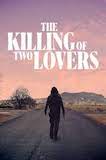 The Killing of Two Lovers, screenplay by Robert Machoian – A riddle of masculinity and the complexity of familial roles in a small Texas town emanate from the pages of writer/director Robert Machoian’s screenplay The Killing of Two Lovers. The plot juxtaposes a captivating sequence of a self-perceived jilted husband who looks downward upon his wife and her lover, loaded revolver aimed at the ready, with the image of this same loving father loaded up on “dad jokes” on his way to spend quality time with his children. This psychological drama masterfully transforms the concept of desperation into character actions and dialogue and makes room for several subtle nods to life’s established tire treads that seem to lead the way to the conflicts within for each character. Beginning as a screenplay for a short film, Machoian is careful to expand that and tier each new level of nuance involving marriage separation and the effects on everyone collaterally affected into a marvelous and careful feature-length film. –br The Killing of Two Lovers, screenplay by Robert Machoian – A riddle of masculinity and the complexity of familial roles in a small Texas town emanate from the pages of writer/director Robert Machoian’s screenplay The Killing of Two Lovers. The plot juxtaposes a captivating sequence of a self-perceived jilted husband who looks downward upon his wife and her lover, loaded revolver aimed at the ready, with the image of this same loving father loaded up on “dad jokes” on his way to spend quality time with his children. This psychological drama masterfully transforms the concept of desperation into character actions and dialogue and makes room for several subtle nods to life’s established tire treads that seem to lead the way to the conflicts within for each character. Beginning as a screenplay for a short film, Machoian is careful to expand that and tier each new level of nuance involving marriage separation and the effects on everyone collaterally affected into a marvelous and careful feature-length film. –br |
|
 Never Gonna Snow Again, screenplay by Michal Englert and Malgorzata Szumowska – The Polish collaborators drew on their experiences from their pasts when communist Poland rush headlong into capitalism in the 90’s. This crass commercialism, symbolized by the cookie cutter mansions in a gated community is disrupted by the arrival of Zhenia, a spiritual masseur, who heals both the body and the soul. It’s fascinating that Englert and Szumowksa, who also co-direct take a decidedly capitalist trope of the superhero, and shows what might happen in reality, if a person discovered they had super powers and wanted to help people, but didn’t put on a garish, spandex costume to fight crime. The fablesque merging of a superhero story, complete with an origin rooted in Chernobyl, and the community struggle with capitalism makes for a surreal and powerful story. –mrc Never Gonna Snow Again, screenplay by Michal Englert and Malgorzata Szumowska – The Polish collaborators drew on their experiences from their pasts when communist Poland rush headlong into capitalism in the 90’s. This crass commercialism, symbolized by the cookie cutter mansions in a gated community is disrupted by the arrival of Zhenia, a spiritual masseur, who heals both the body and the soul. It’s fascinating that Englert and Szumowksa, who also co-direct take a decidedly capitalist trope of the superhero, and shows what might happen in reality, if a person discovered they had super powers and wanted to help people, but didn’t put on a garish, spandex costume to fight crime. The fablesque merging of a superhero story, complete with an origin rooted in Chernobyl, and the community struggle with capitalism makes for a surreal and powerful story. –mrc |
|
 Preparations to Be Together for an Unknown Period of Time, screenplay by Lili Horvát – This cryptic Hungarian film is a serene puzzle to explore. Lili Horvát weaves a psychological romance that unspools from the mind of a neurosurgeon sharing her story of love and obsession with a psychiatrist. After building a successful career in the States, Márta (a compelling Nastasa Stark) chucks it all to rendezvous back home in Hungary with a man she meets briefly at a conference. Upon arrival, he doesn’t show, and when they reunite, he claims not to remember her. The story weaves its way to revelation and we’re never sure if we’re seeing life unspool in reality? Or is it all in Márta’s mind? A blend of lush romanticism, with modern-day science, Horvát’s original screenplay simultaneously stimulates our brains, and teases our hearts. –mrc Preparations to Be Together for an Unknown Period of Time, screenplay by Lili Horvát – This cryptic Hungarian film is a serene puzzle to explore. Lili Horvát weaves a psychological romance that unspools from the mind of a neurosurgeon sharing her story of love and obsession with a psychiatrist. After building a successful career in the States, Márta (a compelling Nastasa Stark) chucks it all to rendezvous back home in Hungary with a man she meets briefly at a conference. Upon arrival, he doesn’t show, and when they reunite, he claims not to remember her. The story weaves its way to revelation and we’re never sure if we’re seeing life unspool in reality? Or is it all in Márta’s mind? A blend of lush romanticism, with modern-day science, Horvát’s original screenplay simultaneously stimulates our brains, and teases our hearts. –mrc |
|
 Shiva Baby, screenplay by Emma Seligman – Director Seligman has written a black comedy so excruciating that it borders on psychological horror. Danielle is struggling to enter the adult world of work, financial independence and relationships, armed with a useless degree in gender studies and business. (“It’s not a career—it’s a lens!” she shouts in exasperation at her father). At a crowded shiva for a family friend, her worlds collide to dangerous and hilarious effect when her doting parents, her ex-girlfriend, and her sugar daddy all meet. Danielle gives in to ridiculous fabrications and misguided impulses ss the blintzes and rugelach fly. Clocking in at less than 80 minutes, Shiva Baby’s timing as catastrophes pile up is exquisite. The cringing viewer is held in its thrall. –djy Shiva Baby, screenplay by Emma Seligman – Director Seligman has written a black comedy so excruciating that it borders on psychological horror. Danielle is struggling to enter the adult world of work, financial independence and relationships, armed with a useless degree in gender studies and business. (“It’s not a career—it’s a lens!” she shouts in exasperation at her father). At a crowded shiva for a family friend, her worlds collide to dangerous and hilarious effect when her doting parents, her ex-girlfriend, and her sugar daddy all meet. Danielle gives in to ridiculous fabrications and misguided impulses ss the blintzes and rugelach fly. Clocking in at less than 80 minutes, Shiva Baby’s timing as catastrophes pile up is exquisite. The cringing viewer is held in its thrall. –djy |
|
 Wheel of Fortune and Fantasy, screenplay by Ryûsuke Hamaguchi – The short story is a beast all its own, with very different skill set required to do it well. The same is true for the short film, and writer/director Ryûsuke Hamaguchi successfully tackles the form with a triptych of unusual and unorthodox unrelated relationships. Hamaguchi explores an unconventional love triangle, a seduction trap that goes wrong, and a chance encounter that leads to an unexpected connection in ways that a provocative and surprising. These tales are original, and unconventional, but Hamaguchi’s writing (and directing) is bold, exploring human relationships is surprising ways. –mrc Wheel of Fortune and Fantasy, screenplay by Ryûsuke Hamaguchi – The short story is a beast all its own, with very different skill set required to do it well. The same is true for the short film, and writer/director Ryûsuke Hamaguchi successfully tackles the form with a triptych of unusual and unorthodox unrelated relationships. Hamaguchi explores an unconventional love triangle, a seduction trap that goes wrong, and a chance encounter that leads to an unexpected connection in ways that a provocative and surprising. These tales are original, and unconventional, but Hamaguchi’s writing (and directing) is bold, exploring human relationships is surprising ways. –mrc |
|
Best Adapted Screenplay |
|
  The Lost Daughter, screenplay by Maggie Gyllenhaal, based on the novel by Elena Ferrante – Gyllenhaal’s adaptation of The Lost Daughter adheres fairly closely to the original novel. The novel is a first-person narrative of Leda, now in her 40’s, but still dealing with her guilt over abandoning her two young daughters and husband for several years when she was in her 20’s, while pursuing her academic career. Leda is on holiday alone at a seaside resort in Italy, where she feels a strange connection to another woman, the mother of a small child. The little girl goes missing, and after panic on the beach by the father, family and friends, Leda finds the child and returns her to her mother. Leda was herself lost as a child, as well as frequently threatened with abandonment by her own mother. She also remembers the panic she felt when one of her own daughters went missing. In both the novel and the film, Leda’s actions and motives are confusing to herself and all those around her; she traumatizes the little girl by stealing her doll, insinuates herself as an advisor into the young mother’s less than happy love life, and sparks the ire of the father and his dangerous family and friends. –kp The Lost Daughter, screenplay by Maggie Gyllenhaal, based on the novel by Elena Ferrante – Gyllenhaal’s adaptation of The Lost Daughter adheres fairly closely to the original novel. The novel is a first-person narrative of Leda, now in her 40’s, but still dealing with her guilt over abandoning her two young daughters and husband for several years when she was in her 20’s, while pursuing her academic career. Leda is on holiday alone at a seaside resort in Italy, where she feels a strange connection to another woman, the mother of a small child. The little girl goes missing, and after panic on the beach by the father, family and friends, Leda finds the child and returns her to her mother. Leda was herself lost as a child, as well as frequently threatened with abandonment by her own mother. She also remembers the panic she felt when one of her own daughters went missing. In both the novel and the film, Leda’s actions and motives are confusing to herself and all those around her; she traumatizes the little girl by stealing her doll, insinuates herself as an advisor into the young mother’s less than happy love life, and sparks the ire of the father and his dangerous family and friends. –kp |
|
CO DA, screenplay by Siân Heder, based on the film by Victoria Bedos, Stanislas Carré de Malberg, Éric Lartigau, and Thomas Bidegain – American writer and filmmaker Sian Heder wrote and directed the drama CODA, which has earned her numerous nominations for Best Adapted Screenplay. CODA is a direct adaptation of another fictional story–the 2014 French film La Famille Bélier. La Famille Bélier was nowhere near as well-received as CODA and received backlash from the Deaf community. Heder’s story and direction are more authentic, real experiences. Even the ASL in CODA (which comprises nearly 40% of the script) features real vernacular from the region as Heder and cast took time to get to know the fishing community in Gloucester, even spending enough time on fishing boats to become fairly proficient. The film’s title, CODA–which stands for Child(ren) of Deaf Adults–is also a play on its music-based plot, as 17-year-old Ruby (Emilia Jones) is the only hearing member of a Deaf family in Gloucester, Massachusetts, who discovers a passion for singing. Ruby’s struggle between her passion for music that could lead her to college (far away from her home and family) and her devotion to helping her family is at the heart of the story. –js DA, screenplay by Siân Heder, based on the film by Victoria Bedos, Stanislas Carré de Malberg, Éric Lartigau, and Thomas Bidegain – American writer and filmmaker Sian Heder wrote and directed the drama CODA, which has earned her numerous nominations for Best Adapted Screenplay. CODA is a direct adaptation of another fictional story–the 2014 French film La Famille Bélier. La Famille Bélier was nowhere near as well-received as CODA and received backlash from the Deaf community. Heder’s story and direction are more authentic, real experiences. Even the ASL in CODA (which comprises nearly 40% of the script) features real vernacular from the region as Heder and cast took time to get to know the fishing community in Gloucester, even spending enough time on fishing boats to become fairly proficient. The film’s title, CODA–which stands for Child(ren) of Deaf Adults–is also a play on its music-based plot, as 17-year-old Ruby (Emilia Jones) is the only hearing member of a Deaf family in Gloucester, Massachusetts, who discovers a passion for singing. Ruby’s struggle between her passion for music that could lead her to college (far away from her home and family) and her devotion to helping her family is at the heart of the story. –js |
|
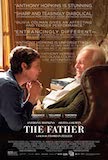 The Father, screenplay by Christopher Hampton and Florian Zeller, based on the play by Florian Zeller – Zeller and Hampton’s screenplay remains wedded to the original stage play about an elderly man sliding into dementia, with some careful editing to tailor the script specifically to Anthony Hopkin’s voice and style. They also visually retooled the interior space of the apartment. Each successive scene introduces minor changes to the furnishings, decorative items, even to the faces and voices of the other characters – that reflect the father’s inability to keep the real and the imaginary from crossing paths and muddling up the details of his life. The details in these changes don’t leap out at the audience, they creep slowly into our awareness, challenging our memory: “Wasn’t that painting on a different wall?” “Is that his daughter? Or his caregiver?” “Are we in his apartment? Or hers?”, drawing the audience into the Father’s perception of the world, where the familiar keeps wandering away and strangers pretend to be his family. –kp The Father, screenplay by Christopher Hampton and Florian Zeller, based on the play by Florian Zeller – Zeller and Hampton’s screenplay remains wedded to the original stage play about an elderly man sliding into dementia, with some careful editing to tailor the script specifically to Anthony Hopkin’s voice and style. They also visually retooled the interior space of the apartment. Each successive scene introduces minor changes to the furnishings, decorative items, even to the faces and voices of the other characters – that reflect the father’s inability to keep the real and the imaginary from crossing paths and muddling up the details of his life. The details in these changes don’t leap out at the audience, they creep slowly into our awareness, challenging our memory: “Wasn’t that painting on a different wall?” “Is that his daughter? Or his caregiver?” “Are we in his apartment? Or hers?”, drawing the audience into the Father’s perception of the world, where the familiar keeps wandering away and strangers pretend to be his family. –kp |
|
 Passing, screenplay by Rebecca Hall, based on the novel by Nella Larsen – Passing, screenplay by Rebecca Hall, based on the novel by Nella Larsen – |
|
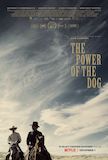 The Power of the Dog, screenplay by Jane Campion, based on the novel by Thomas Savage – Jane Campion’s adaption of The Power of the Dog preserves Savage’s laconic cowboy prose – in my ear, reminiscent of Cormac McCarthy. The sere and unvarnished language of the cattlemen reflects the harsh and unforgiving landscape in which they reside, and the equally hostile and unforgiving company they keep. Brothers Phil and George bark and peck at each other and their ranch hands over management of the livestock, grumble at the idiocy of well-heeled travelers attempting to force their way through a cattle drive. Phil’s blatant mockery and derision aimed at George’s new wife and stepson drives the narrative to its bleak and inevitable conclusion. –kp The Power of the Dog, screenplay by Jane Campion, based on the novel by Thomas Savage – Jane Campion’s adaption of The Power of the Dog preserves Savage’s laconic cowboy prose – in my ear, reminiscent of Cormac McCarthy. The sere and unvarnished language of the cattlemen reflects the harsh and unforgiving landscape in which they reside, and the equally hostile and unforgiving company they keep. Brothers Phil and George bark and peck at each other and their ranch hands over management of the livestock, grumble at the idiocy of well-heeled travelers attempting to force their way through a cattle drive. Phil’s blatant mockery and derision aimed at George’s new wife and stepson drives the narrative to its bleak and inevitable conclusion. –kp |
|
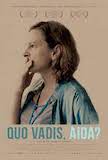 Quo Vadis, Aida, screenplay by Jasmila Zbanic, inspired by the book by Hasan Nuhanovic – Nuhanovic‘s autobiographical account detailed his service as an interpreter for the UN during the Bosnian War. His parents and brother were killed in the Srebrenica massacre despite his desperate efforts to keep them safe in the UN compound. Director/writer Zbranic notably changed the gender of the protagonist to draw on a mother‘s fierceness. Developing the screenplay was tricky, as Zbranic had to deal with the persistent formulation of Serbian war criminal Mladic as a hero, and the pressure that her actors would receive from those sympathetic to him. She sourced dialogue from historical footage and consulted with UN staffers for fact-checking. The adaptation excels in its unrelenting tension in the face of a genocidal threat and bureaucratic indifference. — djy Quo Vadis, Aida, screenplay by Jasmila Zbanic, inspired by the book by Hasan Nuhanovic – Nuhanovic‘s autobiographical account detailed his service as an interpreter for the UN during the Bosnian War. His parents and brother were killed in the Srebrenica massacre despite his desperate efforts to keep them safe in the UN compound. Director/writer Zbranic notably changed the gender of the protagonist to draw on a mother‘s fierceness. Developing the screenplay was tricky, as Zbranic had to deal with the persistent formulation of Serbian war criminal Mladic as a hero, and the pressure that her actors would receive from those sympathetic to him. She sourced dialogue from historical footage and consulted with UN staffers for fact-checking. The adaptation excels in its unrelenting tension in the face of a genocidal threat and bureaucratic indifference. — djy |
|
Best Use of Music in a Film |
|
  Summer of Soul: (…Or, When the Revolution Could Not Be Televised), Randall Poster, Music Supervisor – Although there appears to be no intent for this music to be used in any way other than to let it stand as the record of an event, it also becomes a testament to the meaning it carries for those who created it and for whom it was created: Summer of Soul: (…Or, When the Revolution Could Not Be Televised), Randall Poster, Music Supervisor – Although there appears to be no intent for this music to be used in any way other than to let it stand as the record of an event, it also becomes a testament to the meaning it carries for those who created it and for whom it was created:
The music is narrative; it tells the story of Black people.
The music is backbone; it forms the resilience of Black people. The music is spirit; it embodies the faith of Black people. The music is joy; it celebrates Black people. The music is theirs; it unites Black people. –jp |
|
 Annette, Ron Mael and Russell Mael, Composers – Ron & Russell Mael (Sparks) have wanted this film to be made for many years, so with their dreams coming true it only stands to reason they were able to hone their musical talent to a fine degree. A perfect marriage between script & sound track. –tb Annette, Ron Mael and Russell Mael, Composers – Ron & Russell Mael (Sparks) have wanted this film to be made for many years, so with their dreams coming true it only stands to reason they were able to hone their musical talent to a fine degree. A perfect marriage between script & sound track. –tb |
|
 Licorice Pizza, Johnny Greenwood, Composer; Linda Cohen, Music Supervisor – You expect a Paul Thomas Anderson picture to sport an effective, eclectic soundtrack; like his past 1970s Los Angeles-set films Boogie Nights and Inherent Vice, this one does not disappoint. He nimbly makes room for folk-rock (Gordon Lightfoot), psych-rock (Donovan), soft-rock (Seals and Crofts) and boogie-rock (James Gang) while also throwing in such left turns as a Nina Simone ballad in the very first scene and a silly Chuck Berry novelty tune. Far more profound, however, is when the soulful Paul McCartney and Wings deep cut “Let Me Roll It” accompanies the thrilling moment you sense his two unlikely leads are falling for each other. –ck Licorice Pizza, Johnny Greenwood, Composer; Linda Cohen, Music Supervisor – You expect a Paul Thomas Anderson picture to sport an effective, eclectic soundtrack; like his past 1970s Los Angeles-set films Boogie Nights and Inherent Vice, this one does not disappoint. He nimbly makes room for folk-rock (Gordon Lightfoot), psych-rock (Donovan), soft-rock (Seals and Crofts) and boogie-rock (James Gang) while also throwing in such left turns as a Nina Simone ballad in the very first scene and a silly Chuck Berry novelty tune. Far more profound, however, is when the soulful Paul McCartney and Wings deep cut “Let Me Roll It” accompanies the thrilling moment you sense his two unlikely leads are falling for each other. –ck |
|
 The Lost Daughter, Amos Newman and Virgil Thomas, Executives in Charge of Music; Dickon Hinchliffe, Composer – The opening shots of Leda Caruda (Olivia Colman) driving to a vacation cottage in Greece are accompanied by a lilting, rhythmic melody played on keyboards and strings. Dickon Hinchiffe (who also composed scores for Winter’s Bone and Leave No Trace) has crafted a haunting melody that has a nostalgic, melancholy quality, as if music could capture the color of a sunset or the feel of an ocean breeze. Its repetitive arc also prepares the viewer for a story that is very much a reflection upon past events, the actions and choices that bring the protagonist to where she is now. –pa The Lost Daughter, Amos Newman and Virgil Thomas, Executives in Charge of Music; Dickon Hinchliffe, Composer – The opening shots of Leda Caruda (Olivia Colman) driving to a vacation cottage in Greece are accompanied by a lilting, rhythmic melody played on keyboards and strings. Dickon Hinchiffe (who also composed scores for Winter’s Bone and Leave No Trace) has crafted a haunting melody that has a nostalgic, melancholy quality, as if music could capture the color of a sunset or the feel of an ocean breeze. Its repetitive arc also prepares the viewer for a story that is very much a reflection upon past events, the actions and choices that bring the protagonist to where she is now. –pa |
|
 The Summit of the Gods, Emmanuel Deletang, Music Producer; Amin Bouhafa, Composer – Among the many fine elements of this Buried Treasure nominee is the score by Amine Bouhafa (Timbuktu, The Man Who Sold His Skin). The score explores many emotional and sonic textures, from minimal piano and violin underlying more personal moments to sweeping orchestral grandeur echoing the imposing and dangerous mountainscapes. For the several scenes of danger, the score embraces atonality and dissonance to enhance suspense. Particularly in extended climbing scenes with little or no dialogue, the score helps fill the gap, sometimes giving the impression that it is the voice of the mountain itself. — tp/pe The Summit of the Gods, Emmanuel Deletang, Music Producer; Amin Bouhafa, Composer – Among the many fine elements of this Buried Treasure nominee is the score by Amine Bouhafa (Timbuktu, The Man Who Sold His Skin). The score explores many emotional and sonic textures, from minimal piano and violin underlying more personal moments to sweeping orchestral grandeur echoing the imposing and dangerous mountainscapes. For the several scenes of danger, the score embraces atonality and dissonance to enhance suspense. Particularly in extended climbing scenes with little or no dialogue, the score helps fill the gap, sometimes giving the impression that it is the voice of the mountain itself. — tp/pe |
|
Best Sound Design |
|
  Identifying Features, Svook, Sound Designer – The story of a Mexican woman searching for her missing son who disappeared while trying to cross into the US, Identifying Features shows innocent everyday people struggling against immense corruption. The sound design helps convey the mood in its often sparse application, reflecting not only the desolate physical environment but the woman’s sense of bewilderment. It weaves deftly in and out of the score as well, with electronic buzzes and chirps alongside sounds of gunfire. Towards the end of the film, desert sounds and the crackling of a bonfire evokes a figurative or literal demon at the heart of the story. tp/pe Identifying Features, Svook, Sound Designer – The story of a Mexican woman searching for her missing son who disappeared while trying to cross into the US, Identifying Features shows innocent everyday people struggling against immense corruption. The sound design helps convey the mood in its often sparse application, reflecting not only the desolate physical environment but the woman’s sense of bewilderment. It weaves deftly in and out of the score as well, with electronic buzzes and chirps alongside sounds of gunfire. Towards the end of the film, desert sounds and the crackling of a bonfire evokes a figurative or literal demon at the heart of the story. tp/pe |
|
 Gunda, Alexander Dudarev, Sound Designer, Sound Recordist – Sound designer/recordist Alexander Dudarev had his work cut out for him with Viktor Kosakovskiy’s wordless portrait of the fascinating, moving lives of farm animals. The soft grunting of Gunda the pig as she leads her piglets to the woods where they snuffle for truffles; the clucking of chickens released from battery hen captivity to walk on grass for the first time; the thundering hooves of dairy cows allowed to finally run free in a pasture. These are sounds of freedom, pleasure, nurturing, contentment and survival, and there is an undeniable intimacy and immediacy that comes with witnessing them. –pa |
|
 The Humans, Paul Urmson, Sound Designer – To turn his dysfunctional, family, holiday drama into a horror film, writer director Stephen Karam turned to sound designer Paul Urmson to replicate the unsettling soundscape from the stage version of his play, turning the mechanical crashes, wails and shrieks of an aging apartment building in Manhattan into the startling industrial groans and cries of a series of souls crying out. –mrc The Humans, Paul Urmson, Sound Designer – To turn his dysfunctional, family, holiday drama into a horror film, writer director Stephen Karam turned to sound designer Paul Urmson to replicate the unsettling soundscape from the stage version of his play, turning the mechanical crashes, wails and shrieks of an aging apartment building in Manhattan into the startling industrial groans and cries of a series of souls crying out. –mrc |
|
 Never Gonna Snow Again, Kacper Habisiak and Marcin Kasinski, Sound Directors – Never Gonna Snow Again, Kacper Habisiak and Marcin Kasinski, Sound Directors – |
|
 Tragic Jungle, José Miguel Enriquez, Sound Designer – Tragic Jungle is the story of a woman fleeing into the depths of the Mayan jungle to escape an arranged marriage. In this merging of untouched nature and the supernatural, the sound design is critical to reflecting the sense of place. Whether its a cacophony of birds, insects, or unfamiliar animals, or the rhythmic sounds of indigenous workers scraping and hacking gum trees to collect sap, the sounds of both nature and man create an eerie backdrop for this supernatural morality tale. tp/pe Tragic Jungle, José Miguel Enriquez, Sound Designer – Tragic Jungle is the story of a woman fleeing into the depths of the Mayan jungle to escape an arranged marriage. In this merging of untouched nature and the supernatural, the sound design is critical to reflecting the sense of place. Whether its a cacophony of birds, insects, or unfamiliar animals, or the rhythmic sounds of indigenous workers scraping and hacking gum trees to collect sap, the sounds of both nature and man create an eerie backdrop for this supernatural morality tale. tp/pe |
|
Best Editing |
|
  Enat Sidi, I Carry You With Me – In her first narrative feature, veteran documentarian Heidi Ewing hasn’t entirely left nonfiction film behind. One could watch all the scenes set in Mexico and think, “I’ve seen this story before.” However, when the action shifts to New York City, the seamlessness of the film’s editing between time periods and locales becomes essential to its trajectory. Once it dawns on you exactly what you’re watching, there’s the splendid, catch-up-in-time realization that no, in fact, you likely haven’t seen this particular story before, told in this way. –ck Enat Sidi, I Carry You With Me – In her first narrative feature, veteran documentarian Heidi Ewing hasn’t entirely left nonfiction film behind. One could watch all the scenes set in Mexico and think, “I’ve seen this story before.” However, when the action shifts to New York City, the seamlessness of the film’s editing between time periods and locales becomes essential to its trajectory. Once it dawns on you exactly what you’re watching, there’s the splendid, catch-up-in-time realization that no, in fact, you likely haven’t seen this particular story before, told in this way. –ck |
|
 Hayedeh Safiyari, A Hero – For Asghar Farhadi’s latest film, A Hero, he and frequent collaborator, Safiyari, who has edited all his films since 2006’s Fireworks Wednesday wanted a true documentary filmmaking feel, from selecting actor moments and the intonation of the accents, he strove for a real-life feel. They chose to shoot in the historic city of Shiraz to capture that familiar feel of the street scenes. The obstacles that dictate our “hero” Rahim’s freedom ebb and flow with Safiyari’s swift editing, which was one of the many prizes the film received at the Cannes Film Festival. The rhythms of the film are dictated by the precision and flow between many varied scenes, especially during a frantic encounter in a busy market, and Safiyari manages them artfully. –mrc Hayedeh Safiyari, A Hero – For Asghar Farhadi’s latest film, A Hero, he and frequent collaborator, Safiyari, who has edited all his films since 2006’s Fireworks Wednesday wanted a true documentary filmmaking feel, from selecting actor moments and the intonation of the accents, he strove for a real-life feel. They chose to shoot in the historic city of Shiraz to capture that familiar feel of the street scenes. The obstacles that dictate our “hero” Rahim’s freedom ebb and flow with Safiyari’s swift editing, which was one of the many prizes the film received at the Cannes Film Festival. The rhythms of the film are dictated by the precision and flow between many varied scenes, especially during a frantic encounter in a busy market, and Safiyari manages them artfully. –mrc |
|
 Peter Sciberras, The Power of the Dog – Peter Sciberras, The Power of the Dog –
|
|
 Jaroslaw Kaminski, Quo Vadis, Aida? – Jaroslaw Kaminski, Quo Vadis, Aida? – |
|
 Sion Sono, Red Post on Escher Street – Sono (also director and writer) edits his 2-1/2 hour film about filmmaking along the lines of a bizarrely woven Escher print. The stories of major and minor characters loop around each other, reverberating, building, and sometimes losing us on the way. The slow pacing of repetitive scenes (posting applications, navigating street construction) ultimately devolves into a 40-minute orgiastic finale. –djy Sion Sono, Red Post on Escher Street – Sono (also director and writer) edits his 2-1/2 hour film about filmmaking along the lines of a bizarrely woven Escher print. The stories of major and minor characters loop around each other, reverberating, building, and sometimes losing us on the way. The slow pacing of repetitive scenes (posting applications, navigating street construction) ultimately devolves into a 40-minute orgiastic finale. –djy |
|
Best Cinematography |
|
  Ari Wegner, The Power of the Dog – The treat of a film like The Power of the Dog is when the visual components and cinematography walk hand-in-hand with the script at large. Ari Wegner takes this walk to the next level, carrying out many of the unspoken dialogues and moods of the film through engaging shots that resonate long after a scene has ended. For moments guiding us to see past the seedy facade of Phil Burbank, handheld shots allow a sense of intimacy and a gateway through the character’s guard. This is contrasted with the many iconic landscapes captured by Wegner which frame the various character isolations within the film. –br Ari Wegner, The Power of the Dog – The treat of a film like The Power of the Dog is when the visual components and cinematography walk hand-in-hand with the script at large. Ari Wegner takes this walk to the next level, carrying out many of the unspoken dialogues and moods of the film through engaging shots that resonate long after a scene has ended. For moments guiding us to see past the seedy facade of Phil Burbank, handheld shots allow a sense of intimacy and a gateway through the character’s guard. This is contrasted with the many iconic landscapes captured by Wegner which frame the various character isolations within the film. –br |
|
Valentyn Vasyanovych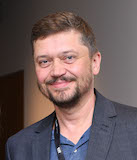 , Atlantis – Set in a wasted land, Atlantis depicts the grim, wintry aftermath of an apocalyptic war. Outdoors, the landscape yields a limited palette composed of mud, filthy snow, fog, military green, dead vegetation, shades of gray stone. A fiery steel mill evokes a primordial inferno. Only incidental light, an erupting blast furnace or a truck’s headlights, illuminate darkness. The camera is frequently static, pulled back to reveal a featureless panorama, the stage on which actors, almost insignificant, play out their parts. This is what the end of the world looks like. –jp , Atlantis – Set in a wasted land, Atlantis depicts the grim, wintry aftermath of an apocalyptic war. Outdoors, the landscape yields a limited palette composed of mud, filthy snow, fog, military green, dead vegetation, shades of gray stone. A fiery steel mill evokes a primordial inferno. Only incidental light, an erupting blast furnace or a truck’s headlights, illuminate darkness. The camera is frequently static, pulled back to reveal a featureless panorama, the stage on which actors, almost insignificant, play out their parts. This is what the end of the world looks like. –jp |
|
 Jhong Yuan Chang, Days – After years of working with acclaimed cinematographer Pen-Jung Liao, as recently as 2015, it appears the baton has been passed to former editor Jhong Yuan Chang, who worked with Pen-Jung on the short film, No No Sleep before taking over the reins. For Days, Tsai’s magnificent pieced-together story of two lonely men, Jhong uses static camera shots that focus on the two characters doing every day things such as preparing a meal, or receiving an experimental medical treatment. He also edit the film which together creates a dazzling tapestry of artistic work. One only has to revel in a scene toward the end of the film where the two men share dinner at a noodle stand, shot from across the street, with passers-by walking in front of the camera, distancing the viewer from a supremely intimate, yet mundane scene. –mrc Jhong Yuan Chang, Days – After years of working with acclaimed cinematographer Pen-Jung Liao, as recently as 2015, it appears the baton has been passed to former editor Jhong Yuan Chang, who worked with Pen-Jung on the short film, No No Sleep before taking over the reins. For Days, Tsai’s magnificent pieced-together story of two lonely men, Jhong uses static camera shots that focus on the two characters doing every day things such as preparing a meal, or receiving an experimental medical treatment. He also edit the film which together creates a dazzling tapestry of artistic work. One only has to revel in a scene toward the end of the film where the two men share dinner at a noodle stand, shot from across the street, with passers-by walking in front of the camera, distancing the viewer from a supremely intimate, yet mundane scene. –mrc |
|
 Michal Englert, Never Gonna Snow Again – Set mostly in a luxurious, if sterile and derivative, housing estate outside Warsaw, Never Gonna Snow Again tells the story of Zhenia, a massage therapist, who uses powers that might be magical to quiet the turmoil in the lives of the people for whom he cares. The estate is filmed in darkness, under a heavy burden of cloud, or looming out of the mist. Inside the houses, scenes are composed, framed, painterly, set in frequently shadowy rooms illuminated by sunlight flooding through vast arrays of glass. To represent the psychological states that Zhenia invokes with his powers, the camera limns a primeval forest, dark and mysterious and revealed in a glimmering, ethereal light. In the hands of cinematographer (and co-director) Michał Englert, the camera becomes a tool with which the inner lives of the story’s characters are made real. –jp Michal Englert, Never Gonna Snow Again – Set mostly in a luxurious, if sterile and derivative, housing estate outside Warsaw, Never Gonna Snow Again tells the story of Zhenia, a massage therapist, who uses powers that might be magical to quiet the turmoil in the lives of the people for whom he cares. The estate is filmed in darkness, under a heavy burden of cloud, or looming out of the mist. Inside the houses, scenes are composed, framed, painterly, set in frequently shadowy rooms illuminated by sunlight flooding through vast arrays of glass. To represent the psychological states that Zhenia invokes with his powers, the camera limns a primeval forest, dark and mysterious and revealed in a glimmering, ethereal light. In the hands of cinematographer (and co-director) Michał Englert, the camera becomes a tool with which the inner lives of the story’s characters are made real. –jp |
|
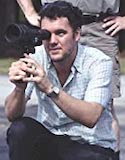 Eduard Grau, Passing – To tell the historically accurate story of a black woman passing for white in 1920’s Harlem, Eduard Grau uses light to composition to turn his black @ white palette into contrasting worlds. In the opening scenes when Tessa Thompson’s Irene, mistaken for white, stops into a fancy hotel for tea, and bumps into her old school friend, Claire (Ruth Negga) – living a double life as a white woman – Grau washes out the color so intensely that the entire world looks white, shadows blasted away and the white linen-clad tables nearly glowing in their luminosity. The effect creates a cold, sleek, but unforgiving world that Irene is drawn to, but uncomfortable in. By contrast, Irene’s home, filled with the warmth of wood and fabric creates a safe, cozy space for her family. His effective use of intense close-ups allow the two actors to convey their inner thoughts with a glance or a widening of the eyes. A beautiful and b=eautifully acted film. –mrc Eduard Grau, Passing – To tell the historically accurate story of a black woman passing for white in 1920’s Harlem, Eduard Grau uses light to composition to turn his black @ white palette into contrasting worlds. In the opening scenes when Tessa Thompson’s Irene, mistaken for white, stops into a fancy hotel for tea, and bumps into her old school friend, Claire (Ruth Negga) – living a double life as a white woman – Grau washes out the color so intensely that the entire world looks white, shadows blasted away and the white linen-clad tables nearly glowing in their luminosity. The effect creates a cold, sleek, but unforgiving world that Irene is drawn to, but uncomfortable in. By contrast, Irene’s home, filled with the warmth of wood and fabric creates a safe, cozy space for her family. His effective use of intense close-ups allow the two actors to convey their inner thoughts with a glance or a widening of the eyes. A beautiful and b=eautifully acted film. –mrc |
|
Best Production Design |
|
  Nora Mendis, Passing – Set in 1920s Harlem, Passing initially appears painstakingly accurate, from the mere decision to shoot in black-and-white to the costumes, settings and instrumental score (which resembles solo piano jazz of the era.) However, before such attention-to-detail threatens to seem too hermetic or contained, the film reveals itself to be more observational and inquisitive than strictly representational, as if privy to an ongoing private conversation between the characters and the camera lens. Working with a relatively minor budget, it manages to evoke not only the look but more crucially the feel of a period long past. –ck Nora Mendis, Passing – Set in 1920s Harlem, Passing initially appears painstakingly accurate, from the mere decision to shoot in black-and-white to the costumes, settings and instrumental score (which resembles solo piano jazz of the era.) However, before such attention-to-detail threatens to seem too hermetic or contained, the film reveals itself to be more observational and inquisitive than strictly representational, as if privy to an ongoing private conversation between the characters and the camera lens. Working with a relatively minor budget, it manages to evoke not only the look but more crucially the feel of a period long past. –ck |
|
 Jacqueline Abrahams, John and the Hole – As John and the Hole was filmed in towns near Boston (Lexington, Lincoln and Norwood), UK-based Production Designer Jacqueline Abrahams drew inspiration from local elements including a partially constructed home and the Alewife T station. The house itself, with its placid suburban location and enormous windows, creates an almost fishbowl feel as we observe John’s activities from a distance. And of course, the titular hole features prominently, a blend of on-location creation and in-studio re-creation to allow for more practical filming, balancing the claustrophobic feeling of being trapped in the bunker with the tantalizing sight of the outside and freedom just out of reach. –tp/pe Jacqueline Abrahams, John and the Hole – As John and the Hole was filmed in towns near Boston (Lexington, Lincoln and Norwood), UK-based Production Designer Jacqueline Abrahams drew inspiration from local elements including a partially constructed home and the Alewife T station. The house itself, with its placid suburban location and enormous windows, creates an almost fishbowl feel as we observe John’s activities from a distance. And of course, the titular hole features prominently, a blend of on-location creation and in-studio re-creation to allow for more practical filming, balancing the claustrophobic feeling of being trapped in the bunker with the tantalizing sight of the outside and freedom just out of reach. –tp/pe |
|
 Alexander Linde, Lapsis – In what could be a visual metaphor of the gig economy it parodies, Lapsis’s buildout is as slapdash as that house of cards. It makes the most of and is even fortunate in having a limited budget. Sleeping bags, backpacks, tents, a few utilitarian changes of clothing, hiking boots, a giant cube, could have been built from plywood or Styrofoam, some extension cords, and a couple of cheesy robots about covers it. But when the movie is mostly discourse-driven, its lines delivered as people drag those cords across miles of endless forest, a minimalist design, background rather than spectacle, serves the movie best. –jp Alexander Linde, Lapsis – In what could be a visual metaphor of the gig economy it parodies, Lapsis’s buildout is as slapdash as that house of cards. It makes the most of and is even fortunate in having a limited budget. Sleeping bags, backpacks, tents, a few utilitarian changes of clothing, hiking boots, a giant cube, could have been built from plywood or Styrofoam, some extension cords, and a couple of cheesy robots about covers it. But when the movie is mostly discourse-driven, its lines delivered as people drag those cords across miles of endless forest, a minimalist design, background rather than spectacle, serves the movie best. –jp |
|
 Grant Major, The Power of the Dog – Grant Smith built the set from the ground up, recreating 1920’s Montana in the open ranges of New Zealnd. You can feel the grit under the rancher’s collar, the tarpaper skin, hands gloved in callouses as hard as rubber tires, from a life spent working exposed daily to the relentless beatings of sun, wind, rain, frost and snow. The rough exteriors of the ranch barns and outbuildings – hunkered beneath the expansive Big Sky that Montana is famous for – contrast sharply with the arts-and-crafts style house, littered with velvet Victorian settees, swathed in dim light and heavy draperies. –kp Grant Major, The Power of the Dog – Grant Smith built the set from the ground up, recreating 1920’s Montana in the open ranges of New Zealnd. You can feel the grit under the rancher’s collar, the tarpaper skin, hands gloved in callouses as hard as rubber tires, from a life spent working exposed daily to the relentless beatings of sun, wind, rain, frost and snow. The rough exteriors of the ranch barns and outbuildings – hunkered beneath the expansive Big Sky that Montana is famous for – contrast sharply with the arts-and-crafts style house, littered with velvet Victorian settees, swathed in dim light and heavy draperies. –kp |
|
 Molly Coffee, Willy’s Wonderland – As with its screenplay so with design: this film boldly offers horror kitsch while presenting itself as a serious contender. The setting for this comedy-horror-action movie is an isolated fun house for families that has fallen into decrepitude over the last 20 years. Buzzing fluorescent lights adorn a graffitied bathroom. A commercial kitchen has decades of grime. Animatronic robots covered in fake fur appear in their past cuteness and present menace. Some are performed from within the costume; others are controlled by green-screen-clothed puppeteers. The blink of their bug-out eyes sound like scissors cutting. When they are stabbed, grease spurts out like a scene from TITANE.” –djy Molly Coffee, Willy’s Wonderland – As with its screenplay so with design: this film boldly offers horror kitsch while presenting itself as a serious contender. The setting for this comedy-horror-action movie is an isolated fun house for families that has fallen into decrepitude over the last 20 years. Buzzing fluorescent lights adorn a graffitied bathroom. A commercial kitchen has decades of grime. Animatronic robots covered in fake fur appear in their past cuteness and present menace. Some are performed from within the costume; others are controlled by green-screen-clothed puppeteers. The blink of their bug-out eyes sound like scissors cutting. When they are stabbed, grease spurts out like a scene from TITANE.” –djy |
|
Best Performance by an Ensemble Cast |
|
  Shiva Baby – It’s one thing for this snappy cringe-comedy to be anchored by a compelling lead (Rachel Sennott as a somewhat aimless young woman enduring the scrutiny of family, friends and ex-lovers); it’s another for it to be fortified with a myriad of wonderfully realized supporting characters: the incorrigible Polly Draper and the inimitable Fred Melamed as Sennott’s parents, the droll Molly Gordon as one of her ex’s, Dianna Agron as the girlboss shiksa who dares to bring a baby to a shiva, plus short, memorable turns from Rita Gardner (as an extremely elderly neighbor) and sourpuss-hall-of-fame comedic actress Jackie Hoffman. –ck Shiva Baby – It’s one thing for this snappy cringe-comedy to be anchored by a compelling lead (Rachel Sennott as a somewhat aimless young woman enduring the scrutiny of family, friends and ex-lovers); it’s another for it to be fortified with a myriad of wonderfully realized supporting characters: the incorrigible Polly Draper and the inimitable Fred Melamed as Sennott’s parents, the droll Molly Gordon as one of her ex’s, Dianna Agron as the girlboss shiksa who dares to bring a baby to a shiva, plus short, memorable turns from Rita Gardner (as an extremely elderly neighbor) and sourpuss-hall-of-fame comedic actress Jackie Hoffman. –ck |
|
A Hero – A HERO is a story about morals and honor. It begins with a lost handbag. Rahim, played brilliantly by Amir Jadidi, finds a lost handbag ( with his girlfriend) while he is on leave from prison where he has been for 3 years. His crime: failure to pay off a debt. Rahim’s dilemma is what to do with the found coins. He returns the purse and becomes the “hero.” It’s not as simple as that may seem. Rahim’s seemingly generous gesture spirals out of control and numerous ethical questions are raised. Unfortunately Rahim is surrounded by a cast of characters ( the loan shark, his girlfriend, his sister, the prison warden, the tv crew, etc) whose seemingly innocent acts contribute to the downfall of Rahim. A Hero could not unfold in the taut way that it does without the perfect casting and precision acting by the whole ensemble. –vo – A HERO is a story about morals and honor. It begins with a lost handbag. Rahim, played brilliantly by Amir Jadidi, finds a lost handbag ( with his girlfriend) while he is on leave from prison where he has been for 3 years. His crime: failure to pay off a debt. Rahim’s dilemma is what to do with the found coins. He returns the purse and becomes the “hero.” It’s not as simple as that may seem. Rahim’s seemingly generous gesture spirals out of control and numerous ethical questions are raised. Unfortunately Rahim is surrounded by a cast of characters ( the loan shark, his girlfriend, his sister, the prison warden, the tv crew, etc) whose seemingly innocent acts contribute to the downfall of Rahim. A Hero could not unfold in the taut way that it does without the perfect casting and precision acting by the whole ensemble. –vo |
|
 Never Gonna Snow Again – Visually spellbinding tale about a mysterious man (Zhenia) who seems to drop out of the sky into an affluent gated community, invigorating their dreary lives, while trying to mend their unique unhappiness. It is brilliantly told with a quirky ensemble cast of characters. Beginning with Alec Utgoff’s Zhenia himself, the assemblage of stricken characters are played by an accomplished cast including Maja Ostaszewska, Agata Kulesza (Ida), Maciej Drosio, Lukasz Simlat, Weronika Rosati, Katarzyna Figura, Andrzej Chyra, and Blanka Burzynska, all of whom together create a community of real people with real heartache, that rise far above the quirky character traits that could define them. –jb,mkc Never Gonna Snow Again – Visually spellbinding tale about a mysterious man (Zhenia) who seems to drop out of the sky into an affluent gated community, invigorating their dreary lives, while trying to mend their unique unhappiness. It is brilliantly told with a quirky ensemble cast of characters. Beginning with Alec Utgoff’s Zhenia himself, the assemblage of stricken characters are played by an accomplished cast including Maja Ostaszewska, Agata Kulesza (Ida), Maciej Drosio, Lukasz Simlat, Weronika Rosati, Katarzyna Figura, Andrzej Chyra, and Blanka Burzynska, all of whom together create a community of real people with real heartache, that rise far above the quirky character traits that could define them. –jb,mkc |
|
 Red Post on Escher Street – For a two-and-a-half-hour film, Sion Sono’s inspired self-referential satire features enough characters for something twice that length, which is fitting given that it’s essentially a paean to the many extras that populate the movies. Many of its figures are suitably outrageous, from the five girls dressed in white who form a “love club” (read: cult) for the director of the film within this film to the self-proclaimed “King of All Extras” who shows off his many, many bit parts for his colleagues after the shooting day is done. Hopefuls, radicals, parents, bullies and perhaps even a ghost round out the cast, itself mostly composed of unknowns as opposed to stars. –ck Red Post on Escher Street – For a two-and-a-half-hour film, Sion Sono’s inspired self-referential satire features enough characters for something twice that length, which is fitting given that it’s essentially a paean to the many extras that populate the movies. Many of its figures are suitably outrageous, from the five girls dressed in white who form a “love club” (read: cult) for the director of the film within this film to the self-proclaimed “King of All Extras” who shows off his many, many bit parts for his colleagues after the shooting day is done. Hopefuls, radicals, parents, bullies and perhaps even a ghost round out the cast, itself mostly composed of unknowns as opposed to stars. –ck |
|
 Rocks – Sarah Gavron puts her posse of multicultural teen-aged girls in Britain through the wringer, and fortunately, the talented cast is more than up to that task. Led with a powerhouse performance by newcomer Bukky Barkay, as the title character who suddenly finds herself an orphan in charge of her younger brother (D’angelou Osei Kissiedu, adorably adept in front of the camera), all of the young ladies run the gamut of emotion when dealing with some pretty heavy issues. Particularly notable are Rocks’ best friend Sumaya, played by Kosar Ali, and Agnes, played by Ruby Stokes, one of the few young actors who’d had previous acting experience. –mrc Rocks – Sarah Gavron puts her posse of multicultural teen-aged girls in Britain through the wringer, and fortunately, the talented cast is more than up to that task. Led with a powerhouse performance by newcomer Bukky Barkay, as the title character who suddenly finds herself an orphan in charge of her younger brother (D’angelou Osei Kissiedu, adorably adept in front of the camera), all of the young ladies run the gamut of emotion when dealing with some pretty heavy issues. Particularly notable are Rocks’ best friend Sumaya, played by Kosar Ali, and Agnes, played by Ruby Stokes, one of the few young actors who’d had previous acting experience. –mrc |
|
Best Documentary
|
|
  The Velvet Underground – Todd Haynes’ THE VELVET UNDERGROUND is a lofty first documentary and curious choice given its straightforward non-fiction nature compared to his previous musical tributes, which are infamously known for their subjects in their own right. Rife with archival film footage of THE VELVET UNDERGROUND, this look at the band is less a deep look at their music as a whole but rather an exploration of their spirit and what drove them internally. The internal drive and fire within them is what pushed them to be the best creatives they could be individually and collectively, but it’s also what drove them apart. From early influences to partnering with Andy Warhol, from bringing on Nico to the ultimate split of the band, this documentary is a digestible look at a moment in American music history. –js The Velvet Underground – Todd Haynes’ THE VELVET UNDERGROUND is a lofty first documentary and curious choice given its straightforward non-fiction nature compared to his previous musical tributes, which are infamously known for their subjects in their own right. Rife with archival film footage of THE VELVET UNDERGROUND, this look at the band is less a deep look at their music as a whole but rather an exploration of their spirit and what drove them internally. The internal drive and fire within them is what pushed them to be the best creatives they could be individually and collectively, but it’s also what drove them apart. From early influences to partnering with Andy Warhol, from bringing on Nico to the ultimate split of the band, this documentary is a digestible look at a moment in American music history. –js |
|
 Playing with Sharks: The Valerie Taylor Story – Once a champion spear fisher, Australian diver Valerie Taylor later became a conservationist, striving to change public perception of sharks, of whom only a small percentage of breeds are actually dangerous to humans. Now in her 80s, Taylor remains active and passionate in her advocacy. Beautifully shot and conceived, this documentary is an expansive overview—it’s thrilling to see Taylor in footage going back six decades, herself going to where few people would tread in order to understand an animal that in much of pop culture has something of a bad rap. –ck Playing with Sharks: The Valerie Taylor Story – Once a champion spear fisher, Australian diver Valerie Taylor later became a conservationist, striving to change public perception of sharks, of whom only a small percentage of breeds are actually dangerous to humans. Now in her 80s, Taylor remains active and passionate in her advocacy. Beautifully shot and conceived, this documentary is an expansive overview—it’s thrilling to see Taylor in footage going back six decades, herself going to where few people would tread in order to understand an animal that in much of pop culture has something of a bad rap. –ck |
|
Some Kind of Heaven – The first ten minutes of this doc about a Florida retirement “village” (population 130,000!) threaten to be a satirical entertainment. Director Lance Oppenheim quickly yet subtly moves beyond the happy-go-lucky Disney World lifestyle to narrow in on the struggles of four retirees. Newly widowed Barbara skeptically engages in meeting other singles and taking classes. Dennis, who hides that he lives in his van, is trying to find a wealthy woman to take care of him. Reggie’s drug abuse and diminishing ties to reality worry his wife Anne. Oppenheim is somewhere between a neutral and compassionate observer. Our concern for the subjects is heightened by the excellent editing and camerawork, especially the close-ups. A one-of-a-kind film. —djy and ck Kind of Heaven – The first ten minutes of this doc about a Florida retirement “village” (population 130,000!) threaten to be a satirical entertainment. Director Lance Oppenheim quickly yet subtly moves beyond the happy-go-lucky Disney World lifestyle to narrow in on the struggles of four retirees. Newly widowed Barbara skeptically engages in meeting other singles and taking classes. Dennis, who hides that he lives in his van, is trying to find a wealthy woman to take care of him. Reggie’s drug abuse and diminishing ties to reality worry his wife Anne. Oppenheim is somewhere between a neutral and compassionate observer. Our concern for the subjects is heightened by the excellent editing and camerawork, especially the close-ups. A one-of-a-kind film. —djy and ck |
|
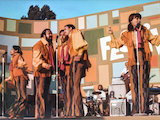 Summer of Soul: (…Or, When The Revolution Couldn’t Be Televised) – Summer of Soul is outwardly the record of an event, a profound and beautiful act of creation, and a cultural touchstone for Black people. For those of us who are not Black, it also offers a chance to see Black people free of the constraints imposed on them in their everyday lives, relaxed, joyful, and celebratory, reveling in the culture they have, against all odds, carved out for themselves. As the music is universal, part of the American canon, white people can certainly enjoy it or wax nostalgic over our associations with it, but, if we pay attention, there is a lesson for us: No Black person can ever be truly at home, at ease, or free around us. White people have an obligation to honor and respect that truth. –jp Summer of Soul: (…Or, When The Revolution Couldn’t Be Televised) – Summer of Soul is outwardly the record of an event, a profound and beautiful act of creation, and a cultural touchstone for Black people. For those of us who are not Black, it also offers a chance to see Black people free of the constraints imposed on them in their everyday lives, relaxed, joyful, and celebratory, reveling in the culture they have, against all odds, carved out for themselves. As the music is universal, part of the American canon, white people can certainly enjoy it or wax nostalgic over our associations with it, but, if we pay attention, there is a lesson for us: No Black person can ever be truly at home, at ease, or free around us. White people have an obligation to honor and respect that truth. –jp |
|
 The Truffle Hunters – A beautifully filmed documentary, The Truffle Hunters takes the audience to the forests of Northern Italy to watch up close the art of hunting the rare white Alba truffle. In this case, the artists are a group of elderly and eccentric men accompanied by their indispensable and lovable dogs. The film clearly belongs to the hunters and their excursions into the woods. But the film also touches on the ecosystem associated with the truffles and introduces us to the dealers, auctioneers and chefs competing for the choicest truffles. This touch of reality does not take away from the unforgettable portrait of this rare group of men who are proud to be truffle hunters. –vo The Truffle Hunters – A beautifully filmed documentary, The Truffle Hunters takes the audience to the forests of Northern Italy to watch up close the art of hunting the rare white Alba truffle. In this case, the artists are a group of elderly and eccentric men accompanied by their indispensable and lovable dogs. The film clearly belongs to the hunters and their excursions into the woods. But the film also touches on the ecosystem associated with the truffles and introduces us to the dealers, auctioneers and chefs competing for the choicest truffles. This touch of reality does not take away from the unforgettable portrait of this rare group of men who are proud to be truffle hunters. –vo |
|

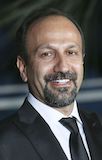 Asghar Farhadi for
Asghar Farhadi for